8 of the best places to visit in Costa Rica

Mar 3, 2024 • 7 min read
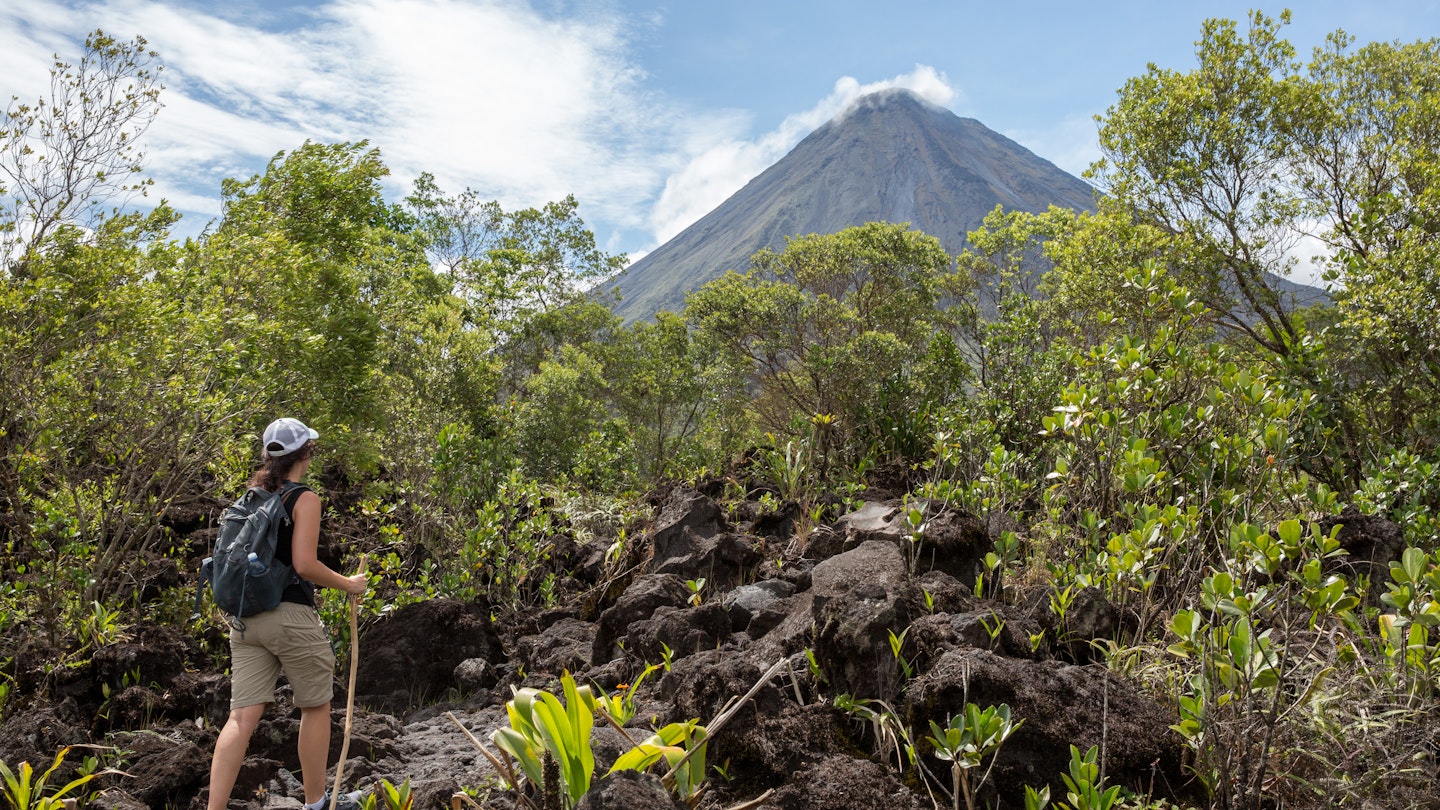
Costa Rica has many beautiful places to visit. Here are the best © MB Photography / Getty Images
Costa Rica is home to everything from steamy rainforests and misty cloud forests, to still-smoking volcanoes and sublime beaches strung along Pacific and Caribbean coastlines.
The country’s motto is pura vida – or pure life – and a quarter of its landmass is protected by national parks and reserves , offering a wealth of wildlife watching among untamed nature.
And there’s enough adrenaline-fuelled action to satisfy the most demanding thrill-seeker, from white water rafting to zip lining and serious surf breaks. Below, we look at the places you won’t want to miss.

1. La Fortuna
Best place for outdoor adventures
Volcán Arenal’s picture-perfect cone looms over the town of La Fortuna . Up until 2010, it thrilled visitors with plumes of smoke and lava pyrotechnics, but today climbing to the summit is illegal.
You can still get up close to its lava-covered lower slopes by taking the Las Coladas trail, one of several unforgettable hikes around Volcán Arenal National Park, about 7km (10.5 miles) west of La Fortuna.
Hike down to La Fortuna’s impressive waterfall , which plunges out of thick vegetation into an emerald-green pool, or get muddy on a spelunking tour through the limestone labyrinth of the Venado Caves .
Near Volcán Arenal National Park, around 7km (10.5 miles) west of La Fortuna, there’s horseback riding, mountain biking, rappelling and ziplining on offer too, along with kayaking and windsurfing on Lake Arenal. The region’s natural hot springs make the perfect place to ease weary muscles.
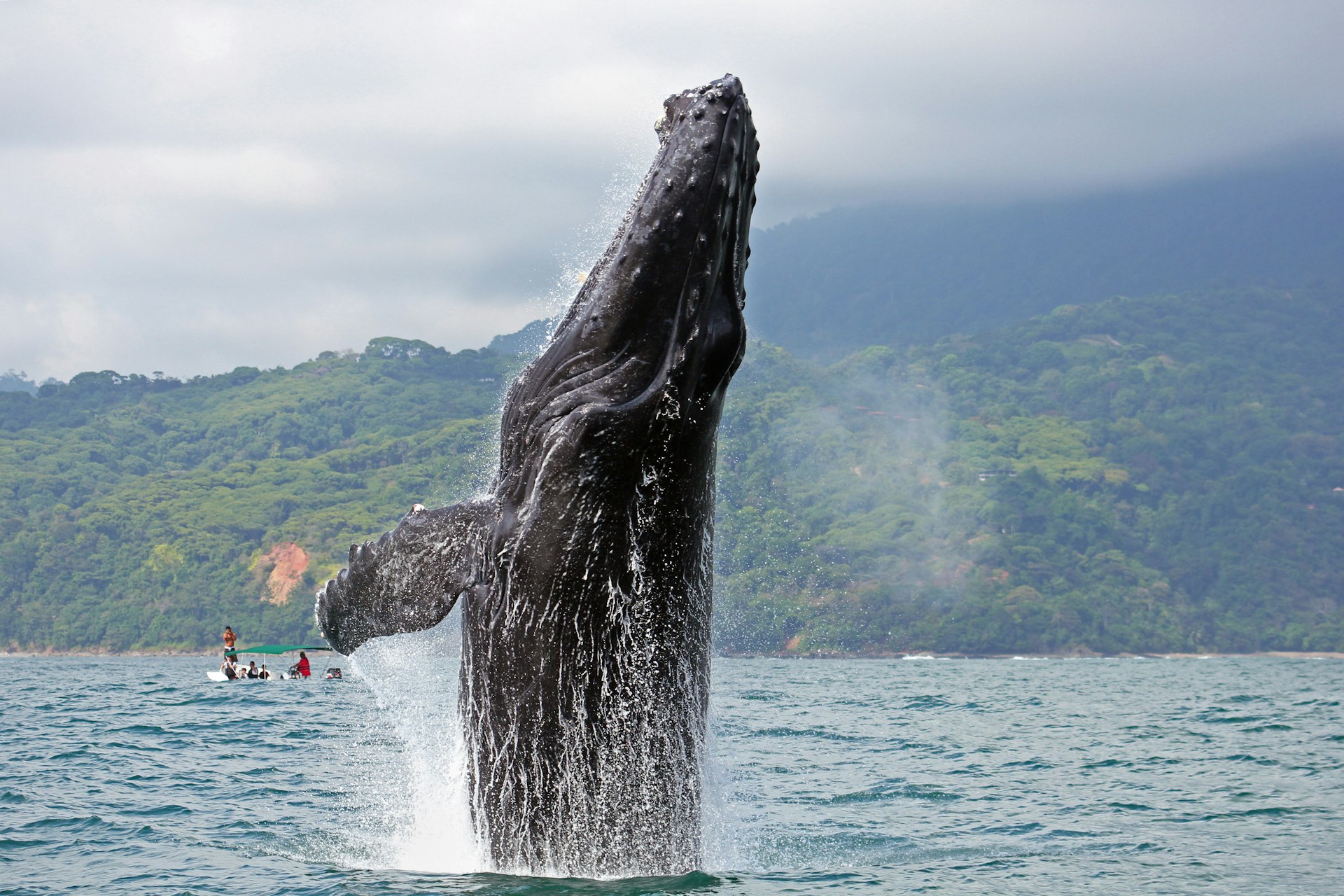
2. Osa Peninsula
Best place for getting off-the-beaten path
The wild and remote Osa Peninsula is all rainforests, rivers and mangroves, ringed by pristine beaches.
Wake to a chorus of chirrups, whoops, caws and the sonorous roar of howler monkeys. Watch spider monkeys put on an impressive display of treetop gymnastics while scarlet macaws squawk and preen.
It’s just a typical morning in the Parque Nacional Corcovado , one of the most biodiverse places on the planet.
The gin-clear waters of Bahía Drake are home to humpback whales and dolphins, and it’s the jumping-off point for diving and snorkeling tours to the marine playground of Isla del Caño.
Planning tip: The whale season generally runs between the months of December and April and July and October.
3. Monteverde
Best place for birds, butterflies and cloud forest canopy tours
Away from Costa Rica’s sun-soaked beaches and steamy rainforests, Monteverde’s mist-wreathed cloud forest reserves sit high on the country’s mountainous spine. It’s one of the world’s biodiversity hot spots, with a staggering array of flora and fauna.
At Curi-Cancha – a cattle ranch turned private reserve – trails wind through primary, secondary and open forests buzzing with jewel-colored hummingbirds and rowdy toucans.
Look out for the aptly named resplendent quetzal with its brilliant green and crimson plumage and sweeping tail feathers – they’re easier to spot during the mating season from March to June.
For a bird’s eye view of the forest, take an adrenaline-fueled ride on a zipline, skimming the canopy at high speed – Sky Trek Monteverde has an automatic braking system, useful for kids and anxious adults.
Planning tip: Take a guided night walk to discover a different side to the forest, when nocturnal critters such as sloths, snakes and kinkajous get active to a soundtrack of the frog chorus.
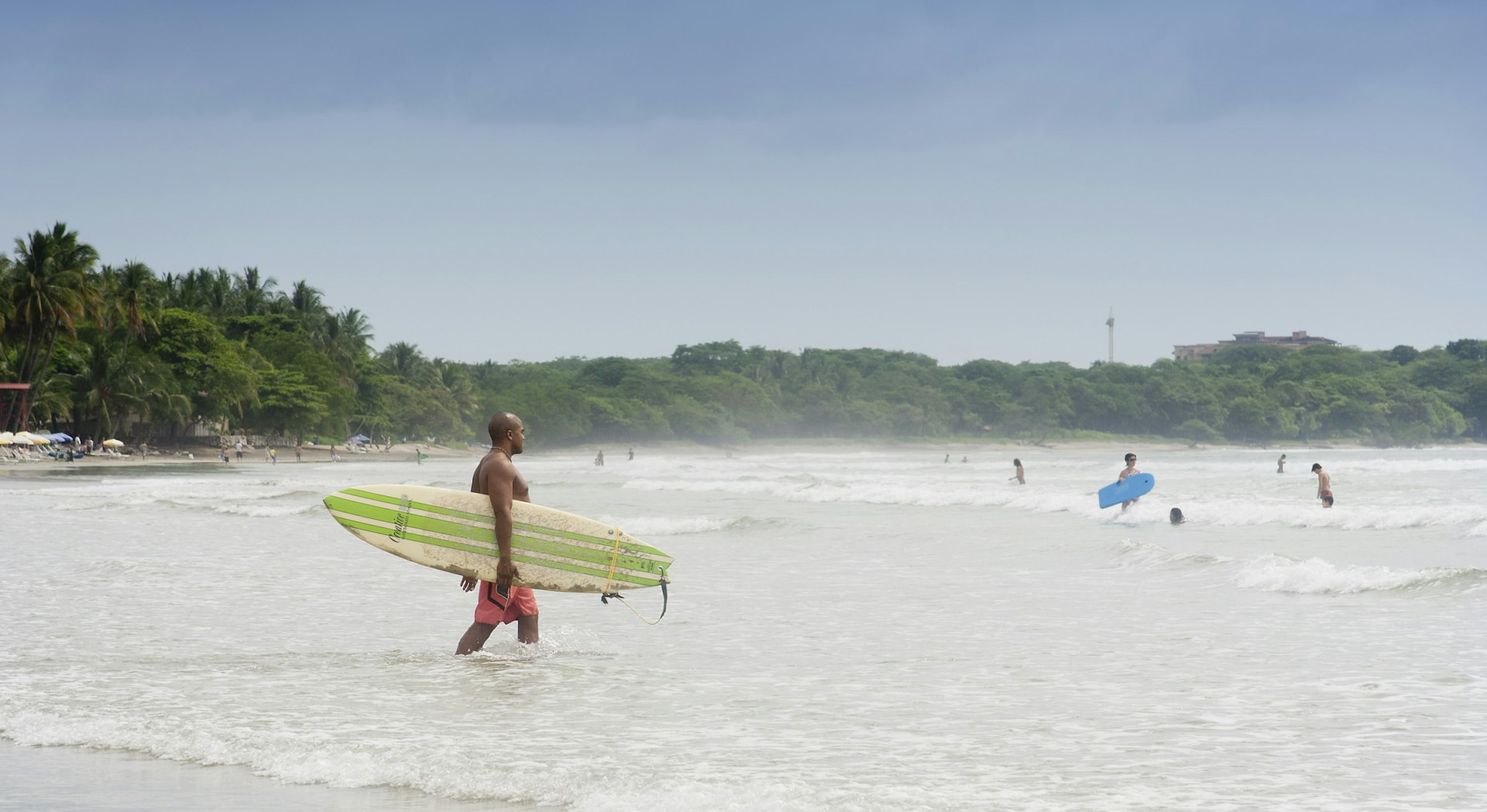
4. The Nicoya Peninsula
Best place for sand and surf
Famed for its postcard-perfect beaches and sweet Pacific swells, Nicoya has something for wave riders of all levels.
There’s wildlife too: just north of the party town of Tamarindo , Grande Beach – part of Las Baulas National Marine Park – is a nesting site for leatherback turtles from October to March.
Among the peninsula’s finest strips of sand are the blissfully secluded Playa Barrigona and Sámara , popular with both Ticos and visitors thanks to its calm, safe waters that are ideal for novice surfers.
Further south, the remote, jungle-backed town of Santa Teresa – long a haunt of surfers-in-the-know – is now a hip hangout with cool cafes, sushi restaurants and designer boutiques.
Like an advert for living the pura vida , Nicoya has been named one of the world’s five Blue Zones , where residents have longer-than-average lifespans thanks to their healthy habits.
Planning tip: Nicoya’s surf season runs from December to April; most surf schools are closed during the rainy season, from August to November.
5. The Caribbean Coast
Best place for turtle spotting
On Costa Rica’s Caribbean Coast , the flooded forest of Parque Nacional Tortuguero has been dubbed a mini Amazon.
It’s home to 400 bird species and from July to October, it's a sanctuary for nesting green sea turtles. Look out for manatees, caiman and crocodiles as you tour its skinny waterways by boat or kayak.
To the south is the diminutive Parque Nacional Cahuita and its namesake village, which protects coastal rainforest, coral reefs and pristine beaches.
Further south, the laid-back Puerto Viejo de Talamanca is the Caribbean Coast’s most developed beach town, with an Afro-Caribbean vibe and lively nightlife.
The village of Manzanillo is quieter, set in the Gandoca-Manzanillo National Wildlife Refuge , where you can snorkel the reefs, kayak through mangroves and hike along rainforest trails. Cycle 4km (2.5 miles) to chill on the idyllic palm-fringed beach at Punta Uva – set your alarm to catch a spectacular sunrise.
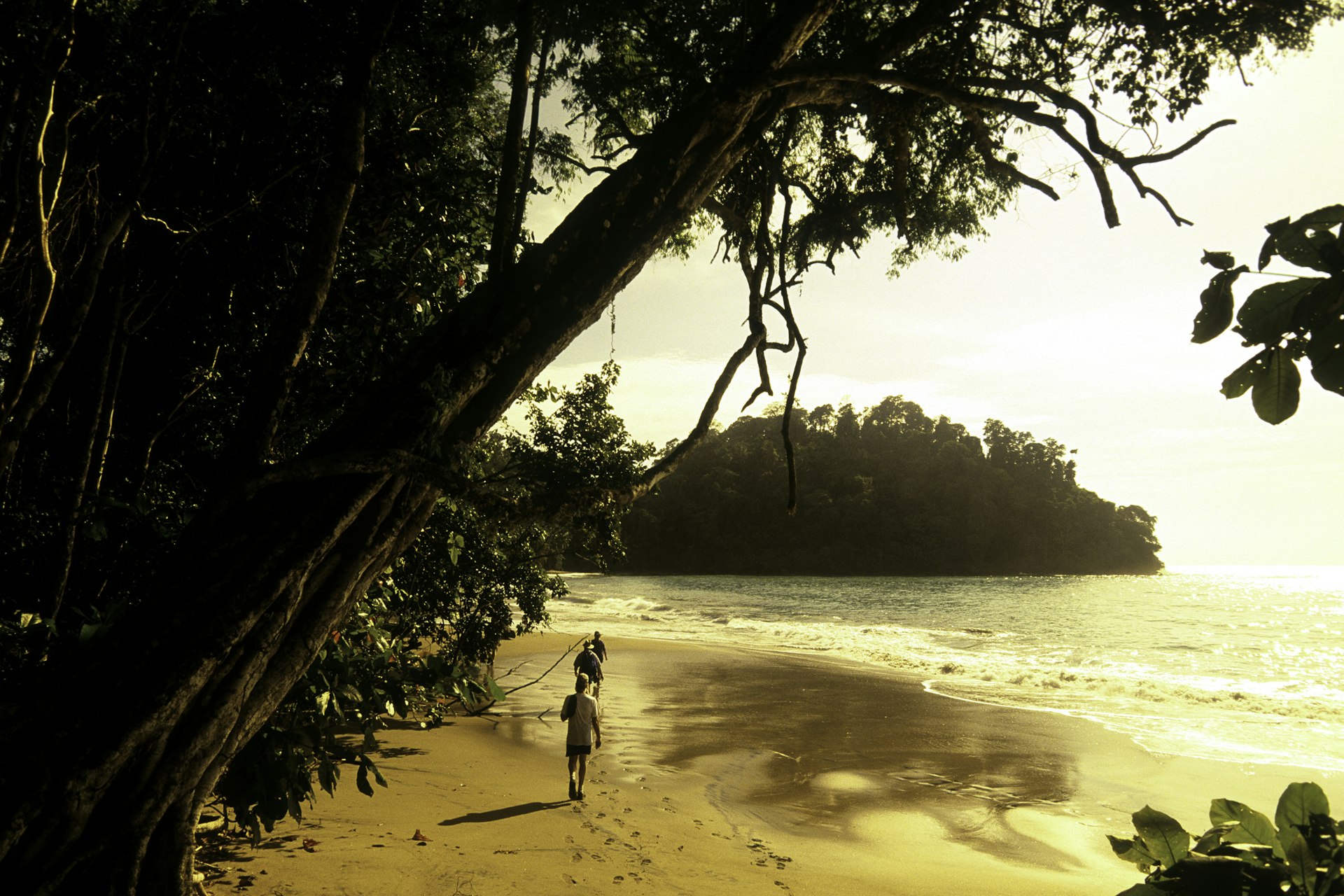
6. Manuel Antonio National Park
Best place for getting up close to wildlife
Fronted by spectacular volcanic-sand beaches and backed by lush rainforest, Parque Nacional Manuel Antonio is Costa Rica’s smallest national park and one of its most popular.
Hiking along its well-marked trails is one of the easiest ways to spot wildlife – but don’t expect to have it to yourself.
You may spot a black spiny-tailed iguana perched above the entrance gate, boisterous squirrel monkeys scampering from tree to tree or marauding racoons searching for a snack.
And with the help of a guide, you might catch a glimpse of a flamboyant poison dart frog no bigger than a thumbnail or a shadow that turns into a snoozing three-toed sloth.
Planning tip: Get to the park before 10am to avoid tour groups and peak heat – it opens at 7am and is closed on Tuesdays.
7. The Central Valley
Best place for volcanoes, coffee and rafting
At the heart of the country, the Central Valley encompasses the cities of San José, Heredia, Cartago and Alajuela, and three active volcanoes. Irazú is the country’s highest – on a clear day, you can see both the Pacific and Caribbean coasts from the summit.
Turrialba is its most active, and at Poás you can peer into its enormous craters, one belching sulfurous mud, another filled with a shimmering lagoon.
Close to Poás, the La Paz Waterfall Gardens offers a multitude of natural wonders and Costa Rica’s largest animal sanctuary, and the town of Turrialba is the launching pad for white water rafting on the scenic Pacuare River , a waterway packed with adrenaline-inducing rapids.
And don’t miss a tour around an organic coffee finca, such as Finca Rosa Blanca , to see how the beans are plucked, dried and roasted before a cupping session.
8. San José
Best place for museums and nightlife
Don't bypass the urban jungle: San José , Costa Rica’s cosmopolitan capital, is worth a stopover.
There’s a dazzling collection of gold at the Museo de Oro Precolombino y Numismática , while the state-of-the-art Museo de Jade houses the world’s largest collection of pre-Columbian jade, or you can tour the architectural splendor of the Teatro Nacional .
The buzzy Mercado Central is perfect for souvenir shopping, and trendy Barrio Escalante is the city’s gastro hub, where you can feast on farm-to-table fare and sample local craft brews – there's organic coffee for the morning after.
Planning tip: If you want to go museum hopping, buying a three-museum pass covering the Museo de Oro Precolombino y Numismática, Museo de Jade and Museo Nacional will save you money.
This article was first published Mar 22, 2021 and updated Mar 3, 2024.
Explore related stories
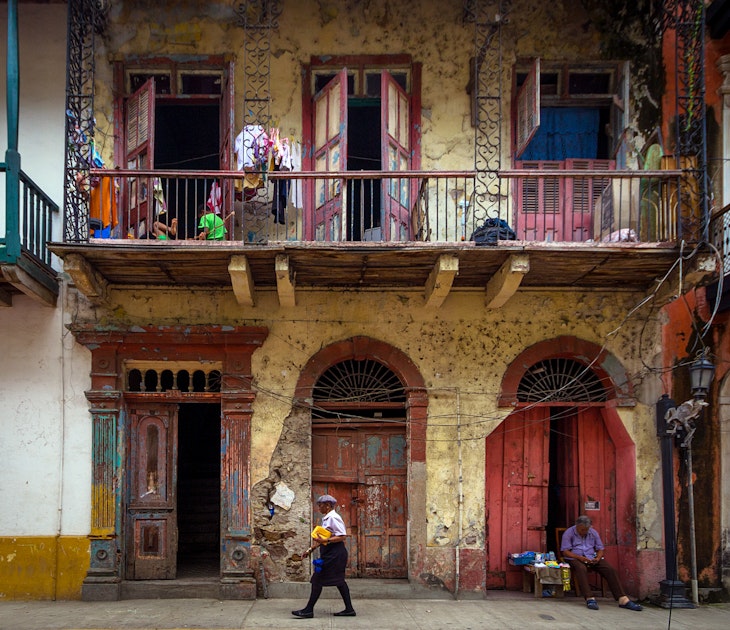
Feb 13, 2022 • 9 min read
Colonial cities, adventure treks, scuba diving, surfing: all there is to do in Central America can be overwhelming. Here’s our guide to the region’s best.

Jan 26, 2024 • 9 min read

Jan 25, 2024 • 4 min read

Oct 6, 2023 • 4 min read
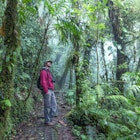
Sep 1, 2023 • 7 min read

Aug 14, 2023 • 9 min read
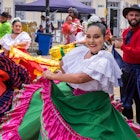
Mar 13, 2023 • 6 min read

Aug 29, 2022 • 4 min read

Jun 28, 2022 • 7 min read
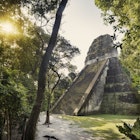
May 3, 2022 • 9 min read
Costa Rica Travel Guide

Courtesy of Matteo Colombo | Getty Images

Why Go To Costa Rica
To many, Costa Rica's charm lies in its lush rainforests, unspoiled beaches and abundance of wildlife. With breathtaking landscapes and a myriad of creatures – from toucans to monkeys to jaguars – it's easy to see why. Where else can you hike active volcanoes, zip line through cloud-covered rainforests and surf warm turquoise waters within the span of just a few days? In this compact but diverse tropical paradise , exhilarating outdoor activities are abundant. Nature-seekers will roam thick jungles while beachgoers will sprawl across the powdery sands. It's hard not to admire all the splendors this "Rich Coast" has to offer.
However, for others, this small Latin American country has a different appeal: it's a relaxed way of life. Residents – known as Ticos – often recite the catchphrase " pura vida " (or "pure life"). This guiding philosophy can be observed from Costa Rica's central cosmopolitan capital of San José all the way to the sandy Atlantic and Pacific coasts. To truly immerse yourself in the good life, kick back and admire the awe-inspiring scenery. Surround yourself with graceful butterflies at La Paz Waterfall Gardens , hike along the monumental Arenal Volcano , mingle with locals at Puerto Viejo de Talamanca , or simply sit in a hammock under a palm tree along the Nicoya Peninsula . We have a strong feeling you'll discover the pure life, too.
Find Flight and Hotel Deals
Navigate forward to interact with the calendar and select a date. Press the question mark key to get the keyboard shortcuts for changing dates.
Navigate backward to interact with the calendar and select a date. Press the question mark key to get the keyboard shortcuts for changing dates.
- # 2 in Best Places to Visit in Spring
- # 2 in Best Cheap Destination Wedding Locations
- # 4 in Best Cheap Vacations in Central and South America
See All 8 Rankings
Best of Costa Rica
Best hotels in costa rica.
- in Nayara Hotel Spa & Gardens
- in Gaia Hotel And Reserve - Adults Only
- in Costa Rica Marriott Hotel San Jose

Best Things to Do in Costa Rica
- # 1 in Nicoya Peninsula
- # 2 in Guanacaste
- # 3 in Ecotermales Fortuna
Popular Tours

Catamaran Tour from Playa del Coco - Trimaran
(12 reviews)
from $ 120.00

Guachipelin Adventure Volcano Zipline Horseback River Tubing Combo
(956 reviews)
from $ 135.00

La Fortuna Waterfall, Hanging Bridges, Arenal Volcano Combo Tour
(1086 reviews)
from $ 172.00
Costa Rica Travel Tips
Best months to visit.
The best time to visit Costa Rica is from mid-December to April (the dry season). This peak tourist season boasts plenty of sunshine making it an ideal time for exploring rainforests and lounging on beaches. That said, the dry season is the most popular (and expensive) time to visit. Luckily the U.S. dollar goes a long way in Costa Rica no matter the season. You'll have to book your room and tour reservations three months in advance to secure a spot. If you don't mind getting a little wet, visit between May and November when prices are at their lowest. During June and July, rain showers pause briefly, and Costa Rica's forests burst with green foliage.
While planning your trip, keep in mind that the weather varies by region. In the thick forests of the Caribbean Sea coast and Northern Plains, expect high humidity and temperatures ranging between the 70s and high 80s year-round. Conversely, in the North Pacific, prepare for lower humidity levels, but temperatures that often soar into the 90s during Costa Rica's dry months.
Weather in Costa Rica
Data sourced from the National Climatic Data Center
What You Need to Know
Pack an umbrella Even if you're planning to visit during Costa Rica's dry season (December to April), don't count on continuous sunshine. Showers can occur year-round.
Bring small bills The U.S. dollar is widely accepted in Costa Rica. It's to your advantage to bring American money, particularly small bills for purchasing souvenirs and tipping.
Ask to see the ICT card You'll be approached by guides offering their services at many of Costa Rica's natural wonders. To ensure you're hiring a professional guide, ask to see their ICT card, which is issued by the Costa Rican Tourism Board. This will ensure you're receiving guide services that have been vetted by the government. You can also sign up for one of the best tours in Costa Rica to ensure you're being led by a professional.
How to Save Money in Costa Rica
Don't rent a car at the airport Most car rental companies at Costa Rica's airports add a 13 percent charge to their rates. It's best to reserve a car ahead of time from a company located in the heart of town rather than the airport.
For better rates, exchange at the airport The exchange rate is generally better in Costa Rica for American dollars. While you'll want to bring a few Costa Rican colóns with you for small purchases upon arrival, exchange the bulk of your cash once you're in the country or withdraw local currency from an ATM.
Make sure the meter is running Taxi drivers have a reputation for charging extra by not switching the meter on. As soon as you step into a taxi, either check that the meter is running or negotiate a flat rate with the driver to avoid a scam.
Culture & Customs
Costa Rican residents ( los Costarricenses or " Ticos ") are known for their pleasant and easygoing nature. Always warm, welcoming and living life to the fullest, Ticos often greet each other with a hearty " Pura Vida! " (meaning "pure life"). Don't be alarmed by their benevolence and eagerness to please guests. To blend in, just reciprocate with kindness and embrace their positive philosophy.
The official language here is Spanish; however, you'll find English-speakers in popular tourist areas. But using some key phrases, such as " por favor " ("please") and " gracias " ("thank you"), is a polite gesture that goes a long way.
Dressing in casual clothing coincides with the laid-back Costa Rican lifestyle. You'll want to pack loose fitting clothing and sturdy hiking shoes if you're planning to explore the country's rustic wildlife reserves, volcanoes and parks. You'll also want to lather up with sunscreen and insect repellent, as mosquitoes and other critters swarm Costa Rica's damp rainforests.
Coffee beans are commonly associated with the "Gold Coast." You're also likely to spot coffee plantations in the Central Plains; many travelers enjoy taking tours here. However, high-end coffee beans are hard to come by since they are commonly exported rather than sold locally.
Costa Rica's official currency is the Costa Rica Colón (CRC). Since the CRC to U.S. dollar exchange rate fluctuates, be sure to check what the exchange rate is before you go. Major credit cards are accepted at most restaurants and shops.
As far as dining goes, travelers should note that restaurants add gratuity onto the bill. However, tipping extra is not uncommon; if the service is stellar, leave an additional tip. For tour guides and drivers, plan to dole out about $10 per day.
Costa Rica's official religion is Catholicism. More than 70 percent of Costa Rica's population identifies as Catholic; however, the Catholic Church's presence is not readily visible to the unsuspecting traveler, except during patron saint celebrations when locals flock to the streets outside churches for dancing, music and scrumptious cuisine.
In Costa Rica, you'll face few safety concerns. However, in congested San José, you'll want to keep an eye on your belongings and your rental car. Pickpocketing and car theft are common in heavily trafficked tourist areas.
What to Eat
With its tropical temperatures, Costa Rican cuisine features an abundance of exotic fruits (especially pejibayes – a type of savory fruit) and vegetables, and depending on what part of the country you are in, lots of fresh fish. Black beans and rice are a staple and are a part of almost every traditional meal. Of course, Costa Rica is famous for its coffee beans (though much of it is exported), but you shouldn't leave without trying a cup.
Common dishes you will see on menus include gallo pinto (rice and beans), ceviche (fish marinated in lemon juice), pati (pastry dough stuffed with curried beef and onions) and agua dulce (warm melted sugarcane). If you visit San José, don't miss the Central Market, which opened in 1880, and is the largest market in the city, with more than 200 shops, stalls and small restaurants. Taking a food tour in San José is a great way to get a taste for the country's unique markets and flavors.
Getting Around Costa Rica
The best way to get around Costa Rica is by bus, which is reliable, navigable, inexpensive and frequently runs through San José , Costa Rica's capital. Driving on your own is not highly recommended as some roads are tricky (speckled with potholes and ambiguously marked intersections). A better alternative to renting your own set of wheels is hiring a car-and-driver service recommended from your hotel , so you can enjoy the country's gorgeous scenery without having to tackle challenging roads with confusing signage. Signing up for one of the best tours in Costa Rica is another great way to sightsee without having to navigate the country on your own. For a hassle-free means of getting to downtown San José from the Juan Santamaría International Airport (SJO), you'll want to flag a taxi. Official taxis at the airport are orange. If you're planning to explore Guanacaste and the Nicoya Peninsula in the northwest region of Costa Rica, you can easily hail a taxi from the Daniel Oduber Quirós International Airport (LIR).
Entry & Exit Requirements
U.S. citizens traveling to Costa Rica will need a passport that is valid for the length of their stay in Costa Rica. Many airlines also require travelers to have a round-trip ticket before boarding flights to Costa Rica to ward off fines imposed by Costa Rican immigration. Travelers should expect to pay a $29 airport departure tax. Visitors can pay the fee upon arrival in Costa Rica or before departure. Check to see if the fee was included in the price of your airline ticket, as some airlines do add this in. However, it is highly recommended to pay in advance as lines can get long at the airport. If you're planning to stay longer than 90 days, you are required to apply for an extension to the Office of Temporary Permits. To learn more, visit the U.S. State Department website .
Recent travelers suggested exploring Tortuguero National Park by boat to marvel at its beautiful landscape and animals.
Explore More of Costa Rica

Things To Do
Best hotels.

You might also like

# 1 in Best Cheap Destination Wedding Locations

# 8 in Best Cheap Honeymoon Destinations for 2024

Chilean Patagonia
# 2 in Best Places to Visit in Central and South America in 2023
If you make a purchase from our site, we may earn a commission. This does not affect the quality or independence of our editorial content.
Recommended
The 28 Best Water Parks in the U.S. for 2024
Holly Johnson|Timothy J. Forster May 8, 2024

The 18 Best Napa Valley Wineries to Visit in 2024
Lyn Mettler|Sharael Kolberg April 23, 2024

The 25 Best Beaches on the East Coast for 2024
Timothy J. Forster|Sharael Kolberg April 19, 2024

The 50 Best Hotels in the USA 2024
Christina Maggitas February 6, 2024

The 32 Most Famous Landmarks in the World
Gwen Pratesi|Timothy J. Forster February 1, 2024

9 Top All-Inclusive Resorts in Florida for 2024
Gwen Pratesi|Amanda Norcross January 5, 2024

24 Top All-Inclusive Resorts in the U.S. for 2024
Erin Evans January 4, 2024

26 Top Adults-Only All-Inclusive Resorts for 2024
Zach Watson December 28, 2023

Solo Vacations: The 36 Best Places to Travel Alone in 2024
Lyn Mettler|Erin Vasta December 22, 2023

26 Cheap Beach Vacations for Travelers on a Budget
Kyle McCarthy|Sharael Kolberg December 4, 2023


18 Top-Rated Attractions & Places to Visit in Costa Rica
Written by Lana Law Updated Apr 25, 2022 We may earn a commission from affiliate links ( )
Costa Rica is a wonderland of natural attractions, with volcanoes, beaches, cloud forests, and wildlife. This is a country that appeals as much to bird-watchers and luxury travelers as it does to surfers and backpackers.
The busy city of San Jose is home to the country's best museums, lovely squares, and cultural attractions, but the real treasures lie beyond the capital, in the forests and small coastal towns and villages.
Endless stretches of beach line the Pacific Coast, with small towns that cater to surfers and sun seekers. The province of Guanacaste in Costa Rica is considered the best place to visit for beautiful beaches and beach towns.
Inland, the forest-covered mountains offer their own adventures, from volcanoes and waterfalls to ziplining and extraordinary wildlife viewing. Although wildlife is prevalent throughout the country, the lush south is where tourists tend to head if they are looking to find animals. The areas south of Jaco down to the Osa Peninsula are some of the best places to visit for wildlife.
For something completely different, check out the Caribbean coast with its calm waters and unique cultural vibe.
Discover the best places to visit with our list of the top tourist attractions in Costa Rica.
1. Manuel Antonio National Park
2. arenal volcano (volcan arenal), 3. monteverde and the cloud forests, 4. tamarindo, 5. dominical, 6. mal pais and santa teresa, 8. wildlife viewing, 9. diamante eco adventure park, 10. osa peninsula and corcovado national park, 11. tortuguero national park, 12. the national theater in san jose, 13. irazu volcano national park, 14. braulio carrillo national park, 15. rincón de la vieja national park, 16. the crocodile bridge on the tarcoles river, 17. la paz waterfall gardens, 18. kiteboarding in costa rica.
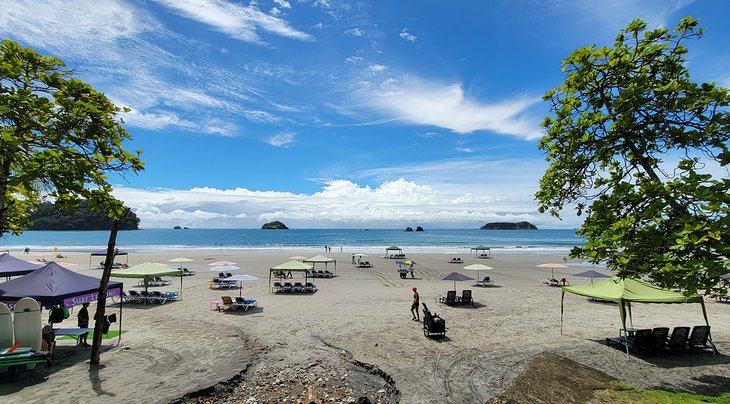
Set on the edge of the town of Manuel Antonio, Manuel Antonio National Park is one of Costa Rica's top destinations for wildlife viewing. It also has the added bonus of being home to beautiful soft-sand beaches.
Some of the usual wildlife sightings in the park are howler monkeys, squirrel monkeys, sloths, white-nosed coatimundis, and the hard-to-miss capuchins. You can also expect to see iridescent butterflies and a myriad of colorful birds flitting about. You can walk the trails on your own, but for a more in-depth experience consider joining a guided tour of Manuel Antonio Park Nature. Guides often know exactly where the animals are and carry tripods and telescopes, ideal for wildlife viewing and photography.
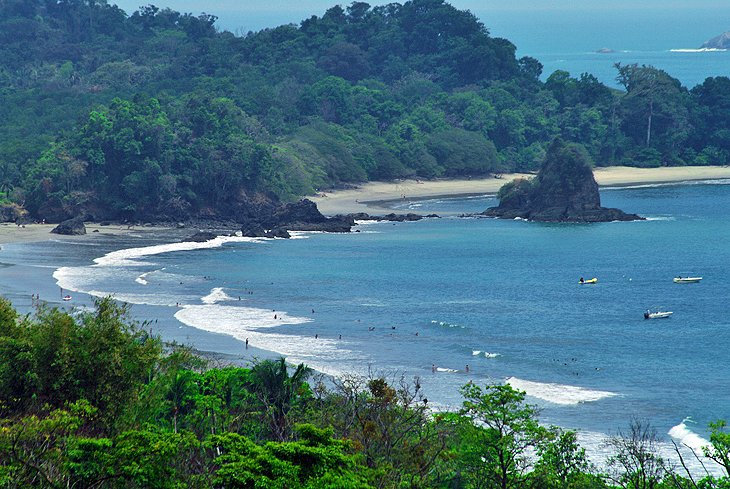
Part of the attraction of Manuel Antonio National Park is its proximity to the town of Manuel Antonio. In town, you can find hotels within easy walking distance of the park, as well as restaurants and other retail.
Most of the action in town is centered around the beautiful oceanfront beach, where umbrellas and beach chairs line the sand and surfers enjoy the usually gentle waves. This is a popular place for beginners to take surf lessons. Across the road from the beach and higher up on the hillside are restaurants and stores, some of which can get loud in the evenings.
If you want to linger here for a few days and treat yourself to a luxury stay, Manuel Antonio is home to one of the top beach resorts in Costa Rica.
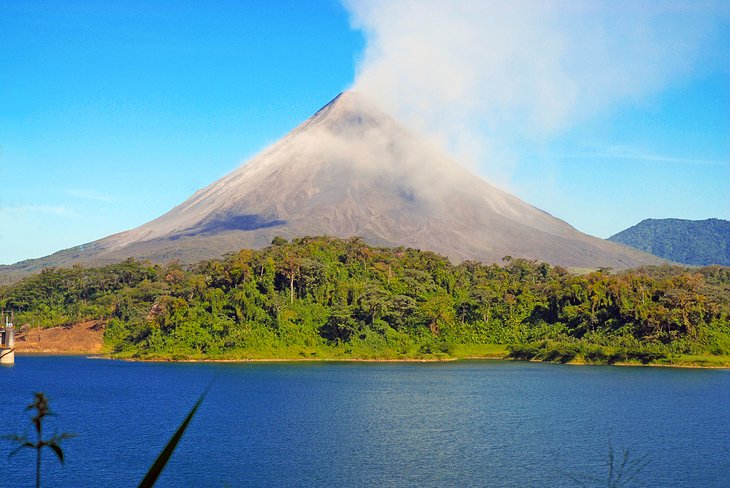
The Arenal Volcano National Park, found in the rugged Cordillera de Tilarán, is one of the top volcano viewing areas in the country. The main attraction here is the Arenal Volcano, a cone-shaped mountain with huge ash columns frequently streaming from the crater.
Arenal was dormant from AD 1500 until a massive eruption on July 29, 1968, which killed 82 people and destroyed two villages. Since then, it has seen regular activity and, depending on the day or week, visitors can expect to see anything from a cloud of ash to glowing red lava flowing down the mountain.
The park is also known for its wide range of biodiversity, with approximately half of all Costa Rican birds, reptiles, amphibians, and mammals represented somewhere within its boundaries.
The Arenal Observatory Lodge , originally a private observatory established in 1987, is the only lodge within the Arenal Volcano National Park boundaries. It is located on a macadamia nut farm on the south side of the volcano. From the lodge, check out the excellent views of the volcano and Arenal Lake in the opposite direction. Numerous hiking trails are in the area; many lead to waterfalls and old and recent lava flows.
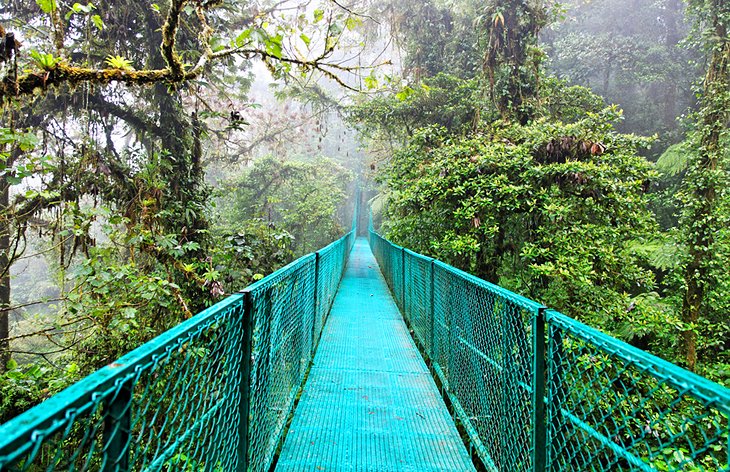
The Cloud Forests near Monteverde and Santa Elena are some of the best places to visit in Costa Rica for ecotourism. If you are itching to immerse yourself in nature and see unique plants and wildlife without venturing too far off the beaten path, this is definitely the place to come.
The clouds covering these forests provide the moisture necessary to sustain the area's unique habitats. While many people come simply for the bird-watching, the Monteverde Cloud Forest Reserve and the Santa Elena Cloud Forest Reserve sustain various mammals, amphibians, and reptiles. Keep an eye out for colorful frogs and howler monkeys. Jaguars and pumas are more elusive. Organized hikes are one of the best ways to see the forest. Another option are canopy tours that may involve ziplines or bridges and even cable cars.
Monteverde and Santa Elena are the two main tourist centers in the region, with accommodation, restaurants, and even shops and artists' galleries. This area, located northwest of San Juan, is a little more than four hours by bus. It can be cold up here, so be sure to bring warm clothes.
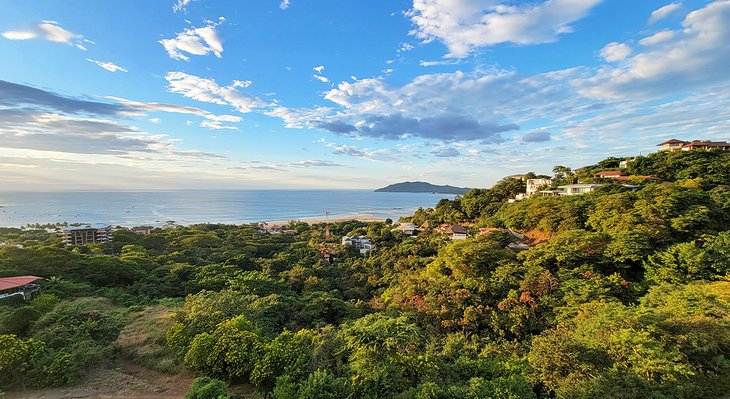
If you're looking for an action-packed beach town to settle in to for a while, Tamarindo is just the place. Located on the Nicoya Peninsula in Guanacaste, Tamarindo is a top destination for surfing, beaching, and fun. Once a quiet fishing village, the town has grown into a tourist haven, where you can find a good assortment of restaurants and hotels.
The town is spread along Tamarindo Beach , a beautiful wide crescent that runs for approximately 1.5 kilometers. The area is known for surfing, with a range of breaks ideal for both experienced surfers and learners. The biggest waves are generally found here in November and December.
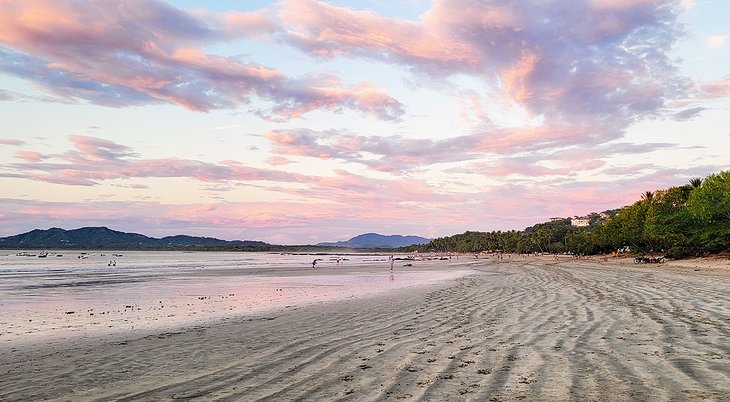
The area around Tamarindo offers eco-friendly adventures and activities that include snorkeling, diving, horseback riding, ziplining, and turtle watching in season. Nearby Playa Grande is one of Costa Rica's most important nesting grounds for leatherback turtles. Throughout October and March, more than 100 turtles can be seen nesting and laying their eggs overnight.
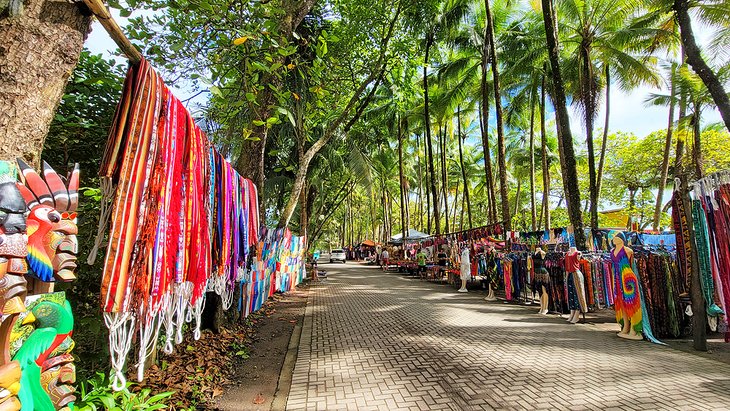
Dominical is a tropical backpacker's haven and one of the best places in Costa Rica for surfing. Lovely beaches, cheap accommodation, casual open-air restaurants, and a great bohemian vibe are what this town has long been known for. But, in the surrounding mountains, resorts, small inns, and luxury rentals attract an upper-end crowd.
A long stretch of beach fronts the town and in behind, under the shady trees, vendors set up tables and sell crafts and other items. In recent years, the once dirt streets have been paved, sidewalks have been bricked, and what was formerly a dusty beach town has become a much more refined tourist destination. Outside of town are quieter beaches, where it's possible to find your own special place.
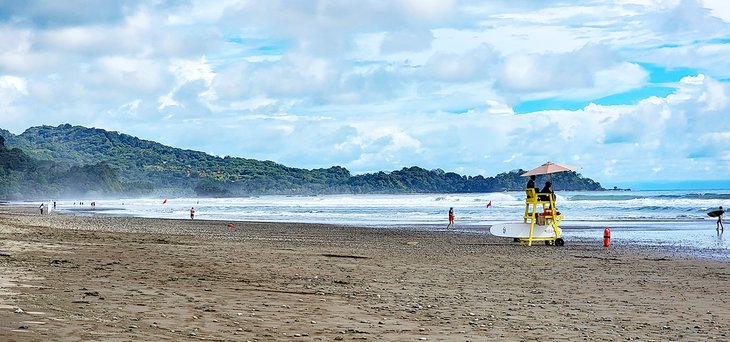
Dominical is a fantastic place to spot wildlife without venturing too far from civilization. Toucans, monkeys, sloths, and scarlet macaws are common sights even right in the town of Dominical.
The annual Envision Festival draws a crowd to Dominical in late February or early March. This event focuses on music, arts, wellness, sustainability, and includes things like yoga and other workshops.
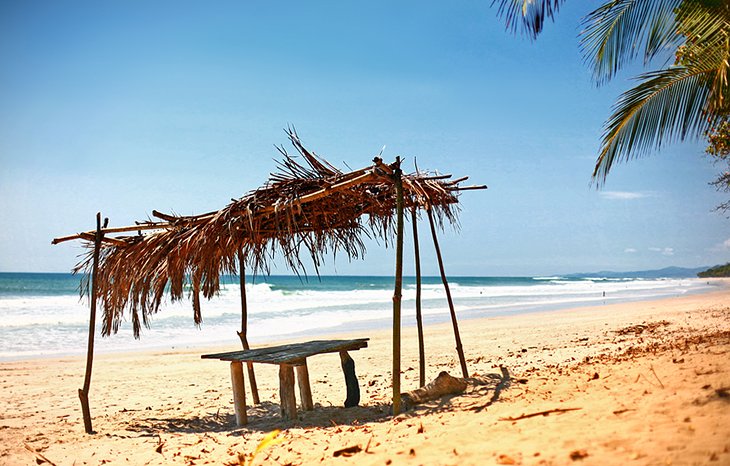
Mal Pais on the Nicoya Peninsula, is an area along the coast known for great waves that attract surfers from around the world. The town of Santa Teresa is the main hot spot in the area, however a chain of villages and beaches lie along the Mal Pais, including the villages of Mal Pais and Manzanillo .
Today, the area is a mix of backpackers, surfers who never managed to leave, and tourists who wish they had planned a longer vacation. The area is more trendy and has more of a scene than places like Dominical , and development in the area has turned it more upscale.
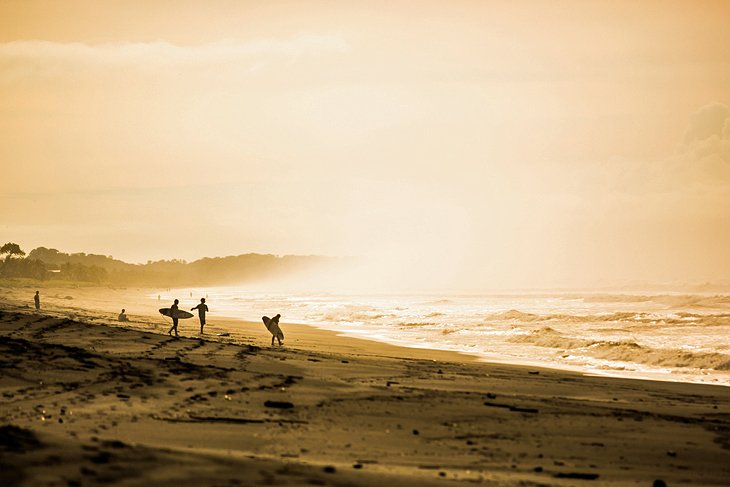
Jaco is a good choice for anyone looking to get out of San Jose but still wanting the comforts and amenities of a larger town or city. The beach here is spacious, pleasant, and has an active vibe.
The surfing and swimming here are both very good, with smaller waves than other areas along this section of coast. What Jaco does have that sets it apart from the numerous coastal towns along this stretch of the Pacific is modern apartments and stores, a strong selection of good restaurants and hotels, and other modern conveniences that have made it a popular choice with expats and retirees.
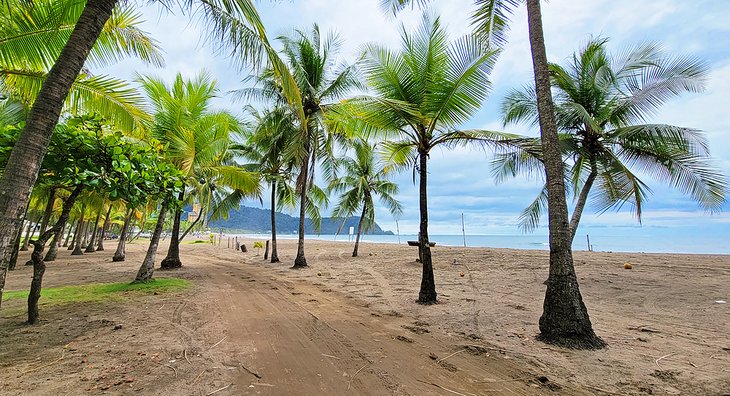
Jaco is less than a two-hour drive from San Jose . If you are arriving in San Jose and want to get out of the city right away but don't want to drive too far your first day, this is an easy destination to reach. You can also base yourself here and explore nearby beaches and attractions on day trips.
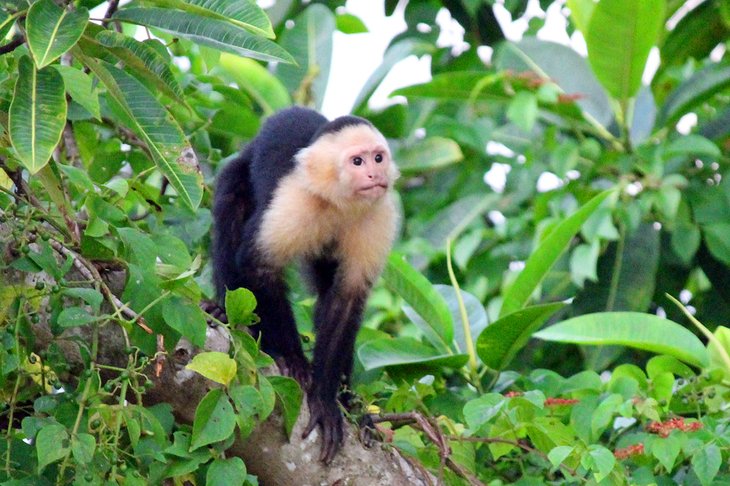
Costa Rica is one of those rare countries where the wildlife alone can be worth the trip. What the country may lack in cultural attractions, it more than makes up for with interesting and prevalent wildlife experiences.
You rarely need to search out animals. Monkeys make regular appearances around the towns, cappuchins hang out around restaurants, scarlet macaws soar through the skies, and toucans rustle in the branches nearby.
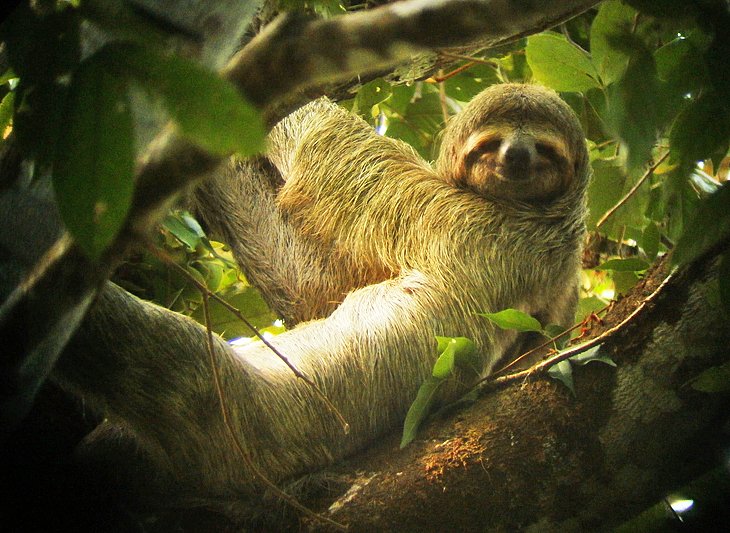
Opportunities to see wildlife are not limited to any one area, but visiting the parks or taking organized tours with knowledgeable guides will improve the chances of seeing some of the more elusive species.
As a general rule, you may have better luck seeing a wider variety of animals in the south of Costa Rica. A guided walking tour through Manuel Antonio National Park will almost guarantee you sightings of sloths and different types of monkeys, along with a variety of other animals. Plan a stay at an eco-lodge in the Osa Peninsula or stay at a small mountainside resort or inn around Dominical, Uvita, or Ojochal, and the wildlife will likely to come to you.
But the north is also full of wildlife. Even if you are staying in downtown Tamarindo, howler monkeys are a common sight in the trees and on overhead wires along the streets. Keep your eyes peeled, and you're sure to see some interesting critter.
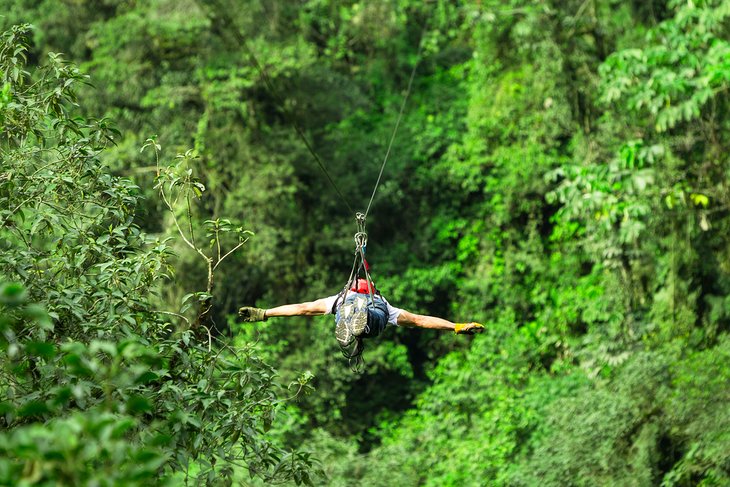
If traipsing through the jungle in the heat is not your idea of fun, head out on a trip to Diamante Eco Adventure Park. Here, the animals, including monkeys, sloths, jaguars, and pumas, are easily spotted in their natural habitat. On-site biologists care for these non-releasable animals and are also on hand to answer any questions you may have. In addition to the large animals, a butterfly enclosure is available to walk through. If you are lucky, one of these gentle and colorful creatures may even land on you.
It wouldn't be Costa Rica if there wasn't an opportunity to go ziplining, and if you want to try it, this is one of the best places to strap in and fly. The most popular zipline at the Diamante Eco Park is the Superman course. You literally jump off the top of a mountain and zip down one mile towards the ocean – head first!
If you'd rather learn about Costa Rican culture and immerse yourself in the country's rich biodiversity, take the Costa Rican Cultural Experience tour. Here, the friendly guides showcase Tico life, food, and culture while teaching you about the local plants that surround you.
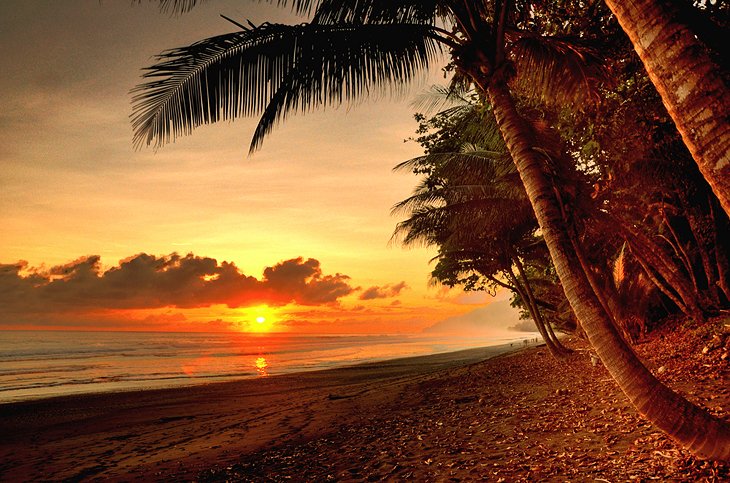
In southern Costa Rica, beyond the beautiful beaches of Dominical, is the remote Osa Peninsula and Corcovado National Park
The park, established in 1975, protects what is considered to be the best remaining stretch of Pacific coastal rainforest in Central America. It has an extensive trail system and is popular with travelers who enjoy long-distance hikes.
In addition to surfing, other popular activities in the region are diving, snorkeling, and fishing. Puerto Jiménez is the area's largest town, and several fine lodges are found in the Drake Bay area.
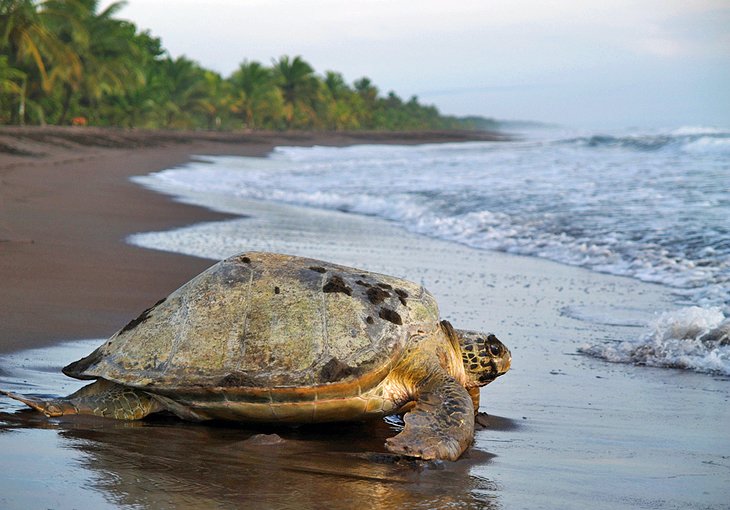
For something a little different and a little off the beaten path, visitors may want to head to Tortuguero National Park on the Caribbean Coast. This area, accessible only by boat or plane, is one of the wettest areas in the country and offers something different than the rest of Costa Rica. The park is an important breeding ground for the green sea turtle and as a result, turtle watching is the main activity here.
While there are many beaches, the coastal area is not suitable for swimming as the surf and currents are rough and strong. Sharks are common. Hundreds and even thousands of green and leatherback turtles can be viewed (guides are necessary) nesting and laying eggs on the beaches overnight. Recent conservation efforts have increased the number of turtles nesting in the area.
From the hiking trails or boat rides along the canals, it's possible to spot monkeys, sloths, and kinkajous. Peccaries and tapirs are also present but more difficult to see. Freshwater turtles, lizards, snakes, frogs, toads, and other amphibians are also common.

Costa Ricans take pride in the National Theater, which is considered to be the most impressive building in San José. In the 1890s, the ruling coffee barons voted for a tax on coffee exports in order to fund the construction of the theater, and European artisans were imported to design the building.
Completed in 1897, the building features a classical Renaissance columned façade topped by statues symbolizing Dance, Music, and Fame. Inside, the pink marble foyer features allegorical figures of Comedy and Tragedy, and painted murals depicting themes in Costa Rican life.
The most famous of the paintings is one showing coffee harvesting and export painted by Arturo Fontana in Milan in 1897.
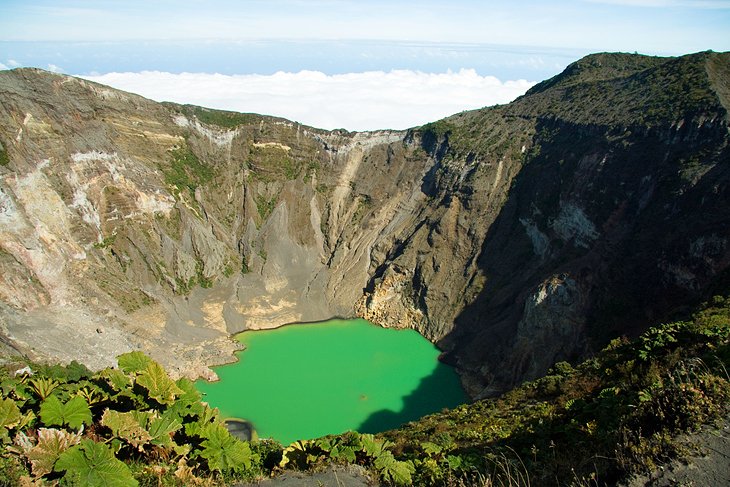
The Irazú Volcano is the highest active volcano in Costa Rica at 3,342 meters. The summit of the volcano is a lunar-like landscape with craters. Irazú's Principal Crater is 1,050 meters in diameter and 300 meters deep, and the Diego de la Haya Crater is considerably smaller and contains a small lime-green lake that sometimes appears red.
Marked trails lead to these craters and two other smaller ones, one of which also contains a lake. A pyroclastic cone can also be seen, which has been formed from fragmented volcanic rock. From the summit, it's possible to look out to the Pacific and Caribbean on clear days.
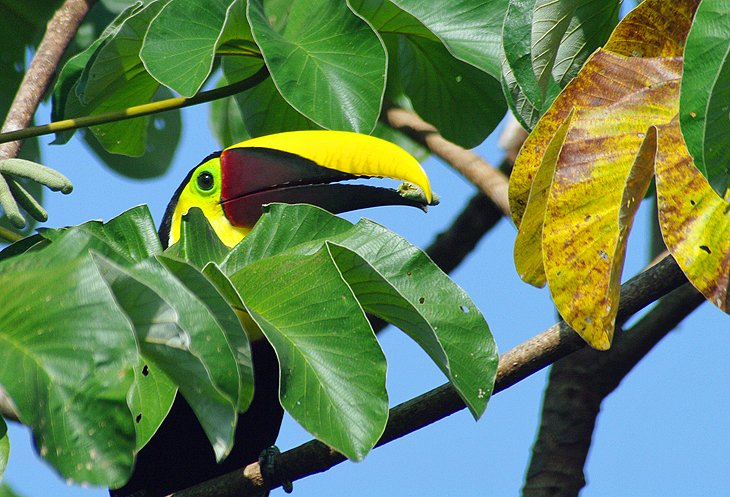
Braulio Carrillo National Park, a 30-minute drive from bustling San Jose, encompasses rugged mountains, waterfalls, canyons, dormant volcanoes, and virgin rainforest. The park's proximity to the country's main gateway means it is an easy way to see some of Costa Rica's unique plants and wildlife.
Many different habitats exist in the park due to the variety in elevation, which ranges from the top of the Barva Volcano (2,906 meters) to less than 50 meters in the Caribbean lowlands. The park is home to mammals such as jaguars, pumas, tapirs, sloths, and monkeys, but easier to see and hear are several species of birds including the Quetzal (national bird), toucans, and eagles.
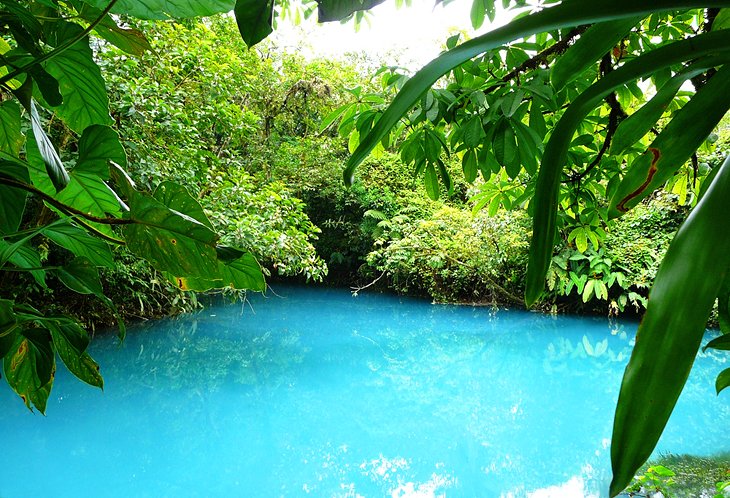
The Rincón de la Vieja Volcano is the main attraction in this park. One of the most popular things to do is a hike to the summit. This 9.6-kilometer trail leaves from Las Pailas and passes through a variety of ecosystems as it climbs to the top. The views are spectacular. You can see the Nicoya Penisula, and on a clear day, right into Nicaragua.
Other less strenuous trails lead to waterfalls and hot springs. The park is also home to a wide variety of wildlife, with tapirs; sloths; monkeys; and large cats such as the jaguar, puma, and ocelot inhabiting the park.
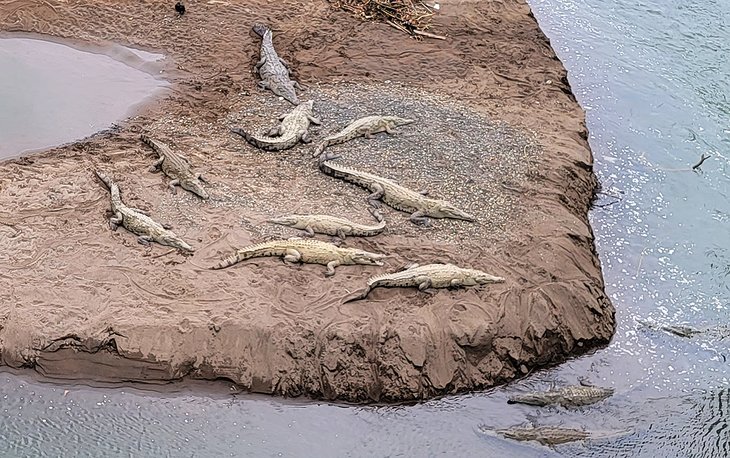
If you want to see a crocodile in Costa Rica, a stop at the Crocodile Bridge will almost guarantee your success. Located about 25 minutes north of Jaco along Highway 34, this is a quick, fun, and easy stop. The Crocodile Bridge spans the Tarcoles River, which is known for having a huge population of American crocodiles.
You'll find a parking area on the north side of the bridge, along with some stores, souvenir sellers, and a Pops ice-cream shop. The bridge has a pedestrian area to walk out on, with railings on the river side and a barrier on the traffic side, so you don't have to worry about traffic. Viewing the crocodiles couldn't be easier, as they bask on the muddy riverbed below.
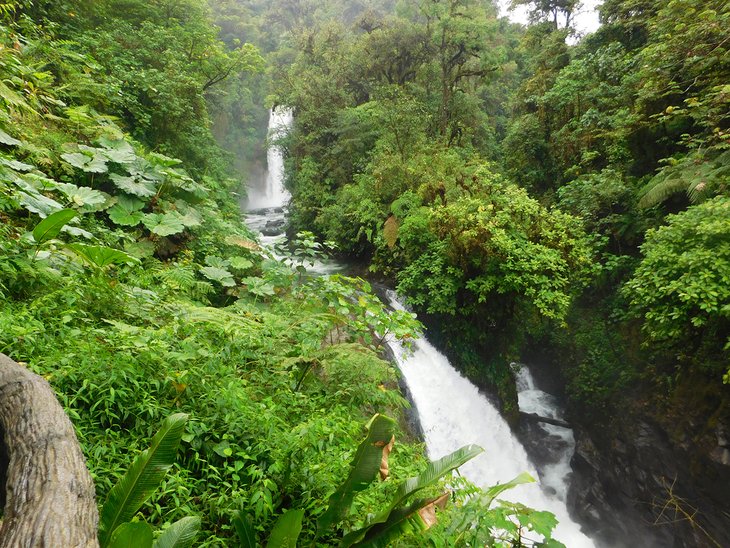
This privately owned nature park is a must-see attraction in Costa Rica. Spread out over 70 acres, the park is home to a wide variety of wildlife including monkeys, butterflies, hummingbirds, and others.
The highlight of the park is La Paz waterfall. Rainwater from the cloud forests tumble off a high ledge, dropping 37 meters into a pool below. In addition to the waterfall, your admission ticket includes access to the serpentarium, butterfly observatory, jungle cat exhibit, and ranarium (frog exhibit).
Official site: www.waterfallgardens.com
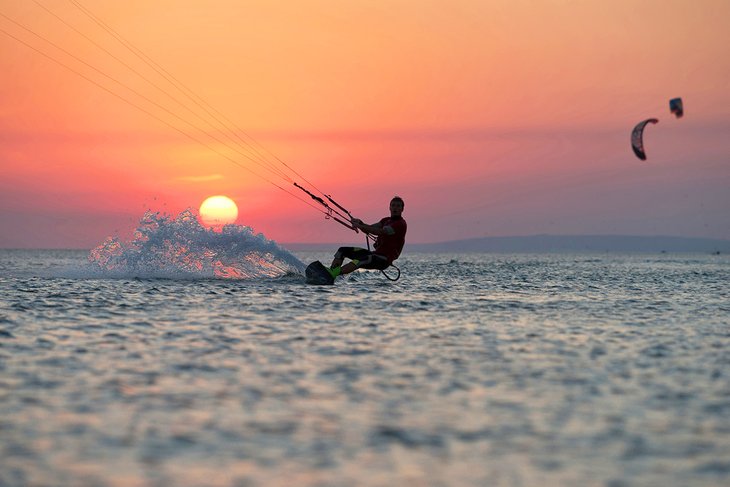
Costa Rica is becoming one of the "go-to" places for kiteboarding travelers. On the far northwestern coast near the Nicaraguan border is a place where the winds are strong and consistent.
Each day, the wind blows down from the massive Lago Cocibolca in Nicaragua and across the beautiful Salinas Bay. Bring your full quiver of kites, but it's likely that your seven-, nine-, and 11-meter sizes will get the greatest workout. Get the arms and legs tuned up, as it can be quite gusty at times.
Comfortable, but basic accommodation is either on the beach or up in the hills from Salinas Bay. If you'd like a more luxurious set of 5-star digs, head to the Dreams Las Mareas .

More on Costa Rica

Nomadic Matt's Travel Site
Travel Better, Cheaper, Longer
Costa Rica Travel Guide
Last Updated: November 2, 2023
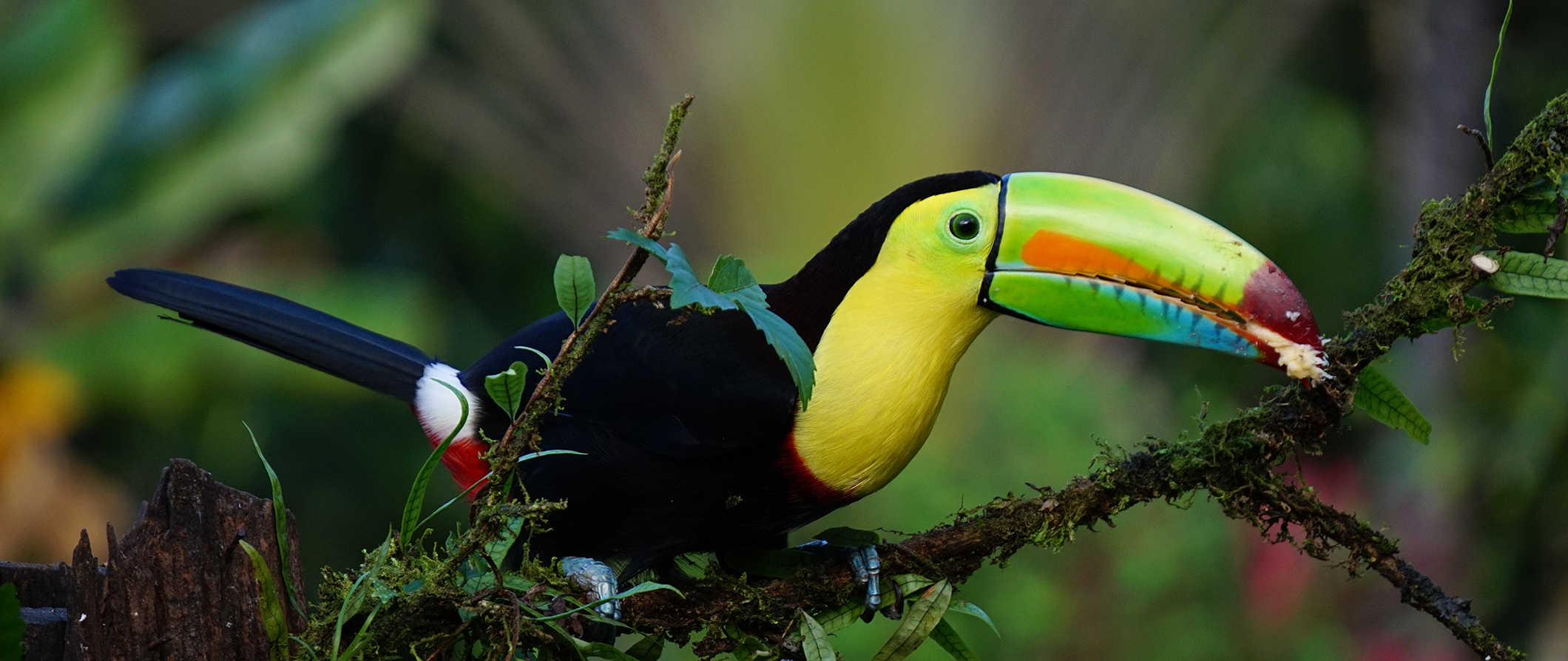
Costa Rica is one of my favorite countries in the world. It was the first country I ever traveled to — and it was the country that sparked my wanderlust.
These days, Costa Rica is one of the most popular destinations in Central America . It’s popular with expats, luxury travelers, and backpackers alike. While it is on the higher end of the price spectrum for the region, it’s nevertheless a phenomenal country to visit and remains affordable.
I love the never-ending activities, gorgeous beaches, diverse wildlife, delicious food, and friendly people.
The country may be expensive by regional standards but that doesn’t make it any less amazing. The beaches are picturesque, there’s great surfing and amazing diving, and there are plenty of places to get away from the hordes of retired Americans that live here.
This guide to Costa Rica can help you have the trip of a lifetime — and save money in the process!
Table of Contents
- Things to See and Do
- Typical Costs
- Suggested Budget
- Money-Saving Tips
- Where to Stay
- How to Get Around
- How to Stay Safe
- Best Places to Book Your Trip
- Related Blogs on Costa Rica
Click Here for City Guides
Top 5 things to see and do in costa rica.

1. Climb a volcano
Volcanoes are among the country’s top tourist attractions. There are currently 5 active ones and over 60 dormant ones. Arenal is the most popular, famous for its beautiful hikes and scenic views. Irazu is known for its astonishing green-blue lake in one of its craters, while the Poas Volcano is home to a boiling acid lake within its crater.
2. Visit Monteverde
Monteverde is one of my favorite places in Costa Rica. I always found this town to be a nice base to hike the surrounding cloud forest, take canopy tours, and visit coffee plantations. I still dream of the coffee from here — it’s like drinking liquid chocolate! Be sure to take a nocturnal rainforest tour while you’re here — they’re super fun and educational.
3. Explore Tortuguero National Park
This park on the Caribbean coast is regarded as one of the most important breeding grounds for the endangered green turtle. The park also helps protect manatees, sloths, and monkeys. If you like jungles, birds, and quiet, this is a must-see! Admission is $16.95 USD. You can visit as a guided full-day tour from San Jose for $195 USD.
4. Explore Corcovado
Established in 1975, Corcovado National Park is on the remote Osa Peninsula in the southwest. Spanning 424 square kilometers (164 square miles), it’s a rugged, quiet, off-the-beaten-path destination. Here you’ll find pristine jungles, hiking trails, and plenty of diving opportunities. There’s lots of wildlife too, including tapirs, jaguars, pumas, and the rare Harpy eagle. The peninsula is not easy to get to but it’s the highlight of the country for me.
5. Stay in Puerto Viejo
Other things to see and do in costa rica, 1. visit san josé.
Costa Rica’s capital, San Jose is in the center of the country. It’s sort of gritty and there’s not a whole lot to do (the city only requires a few days) but while you’re here, visit the Museum of Contemporary Art & Design to check out the future of Costa Rican art, as well as the magnificent Teatro Nacional to take in its décor. There are also many tour companies that offer day trips to the surrounding jungle for hiking, zip-lining, canopy tours, and more. Most start around $150 USD.
2. Zip through the rainforest canopy
The highest 10% of rainforest is where most activity takes place, filled with squawking birds, slow moving sloths, and monkeys scampering from tree to tree. For an adrenaline-pumping view of these vast, diverse ecosystems, take a zip line tour. There are dozens of companies throughout the country, though Monteverde is my favorite place to do it. Expect to pay around $75-85 USD for a multi-line tour lasting a couple of hours .
3. Explore Baru Wildlife Refuge
With over 330 hectares (815 acres) of land, 7 kilometers (4 miles) of walking trails, and 3 kilometers (1.8 miles) of fantastic beaches, this refuge is another prime example of Costa Rica’s natural beauty. Located on the coast south of Manuel Antonio , here you can go birdwatching, take canopy tours, and explore the park via guided tours to see the wildlife. Don’t miss the orchid and butterfly gardens. For something more unique, take a nighttime guided tour to see the region’s nocturnal animals. Self-guided tours cost $15 USD while guided tours start at $35 USD.
4. Go surfing in Jaco
Located on the Pacific Coast west of San Jose, Jaco was once a sleepy resort town whose main attraction was its excellent surfing. Growing tourism has transformed it into a haven of beach parties and nightclubs. Surf lessons and rentals are widely available on the beaches and sport-fishing is also popular here. For a more laid-back visit, head to the nearby Carara National Park to spot scarlet macaws, armadillos, and hundreds of species of birds (admission is $11.30 USD).
5. Learn some Spanish
Costa Rica is one of the most popular countries for learning Spanish due to the country’s easy-to-understand dialect. Programs vary in length and cost, but most offer the opportunity to do an immersive homestay with a Costa Rican family. Expect to spend around $500 USD for a basic week-long homestay language learning program.
6. See La Paz Waterfall Gardens
Located just one hour from San Jose, this makes for a popular day trip. Aside from the many stunning waterfalls throughout the lush cloud forest, here you’ll also find several beautiful gardens, an aviary, a hummingbird garden, a butterfly garden, and a reptile area. Plan to stay at least two hours to see everything. Admission is $50 USD. You can also do a full-day tour to the Waterfall Gardens that includes a visit to a coffee plantation and Poás Volcano for $159 USD.
7. Go fishing
Costa Rica is home to Marlin, Sailfish, Dorado, Snapper, Wahoo, and more. If you love to fish (or just want to give it a try), consider doing a half-day or full-day fishing excursion. A basic group excursion costs around $105 USD and usually includes food, though prices can be ten times as high for multi-day or exclusive charters. A half-day private charter is around $400-600 USD. You can usually find places that can cook your catch as well.
8. Chill out in Santa Teresa
At the bottom of the Nicoya Peninsula is the hippy backpacker town of Santa Teresa. This “town” is really nothing more than a beach with a road lined with eateries, surf shops, and hostels. Not much goes on here as everyone is up early to hit the waves. I enjoyed my time here as it’s a good place to just lay on the beach, hang out with people, and relax. It’s an easy place to fall into and spend weeks. Or, like most people who visit, months.
9. Learn to surf
Puerto Viejo , Cahuita , Manuel Antonio , Jaco, Santa Teresa, or Tamarindo all offer plenty of waves and lots of places to learn to surf. In fact, most travelers come here to surf because the waves are world renowned. If you have never learned but always wanted to try, this is the best place in the region to learn. Group lessons cost around $60 USD and private lessons are around $80-100 USD, while all-inclusive surf camps (including food, accommodation, lessons, and more) can be up to $2,500 USD. Board rentals are usually around $10 USD per day.
10. Walk through the treetops
The Rainmaker Aerial Walkway, located one hour from Jaco, was the first aerial walkway to be built in Central America. Spanning the canopy of a private rainforest, it’s still considered to be one of the top aerial walkways in the region. At the highest point on the walkway, you’ll find yourself 20 stories above the ground, giving you ample opportunities to spot all kinds of birds and monkeys. A self-guided tour is $23 USD, while guided tours start at $74 USD.
11. Wander a coffee plantation
Costa Rican coffee is famous the world over. On a coffee plantation tour you can learn about the entire bean-to-cup process and see it all up close — all while learning about the lives of the local farmers who grow it. While I personally dislike the taste of coffee, the kind I had in Monteverde tasted like chocolate and was delicious! Prices vary but expect to pay around $40-50 USD for a tour.
12. Take a chocolate-making workshop
Cacao is Costa Rica’s other famous bean (also technically a seed). Once widely exported, Costa Rican chocolate is now mostly made in small batches on local artisan farms. There are many places around the country where you can take chocolate making workshops, where you can see the entire process, sample the goods, and try your hand at grinding raw cacao. Tours generally last 2-3 hours and cost around $30-40 USD.
13. Experience the rainforest by night
A guided night walk offers the chance to spot and learn about some of the countless nocturnal animals that call the forest home, including tarantulas, armadillos, and stick bugs. It’s a cool way to see a different side of the jungle as your guide will point out animals, insects, and plants that you might not have noticed otherwise. You can take night walks at national parks and nature preserves around the country. Tours generally last around 2 hours and cost $25-35 USD.
14. Take a cooking class
One of my favorite ways to learn about a new culture is through its cuisine, and taking a cooking class is one of the best ways to do that. Taking home new recipes is also a great souvenir from your trip! In this 3-hour cooking class in La Fortuna, you’ll learn about typical Costa Rican produce and ingredients, and then prepare a few traditional dishes like picadillos (a spicy stew), tortillas, and guisados (a meat dish).
For more information on specific destinations in the country, check out these guides:
- Arenal Travel Guide
- Manuel Antonio Travel Guide
- Monteverde Travel Guide
- Puerto Viejo Travel Guide
- San Jose Travel guide
- Tamarindo Travel Guide
- Tortuguero Travel Guide
Costa Rica Travel Costs
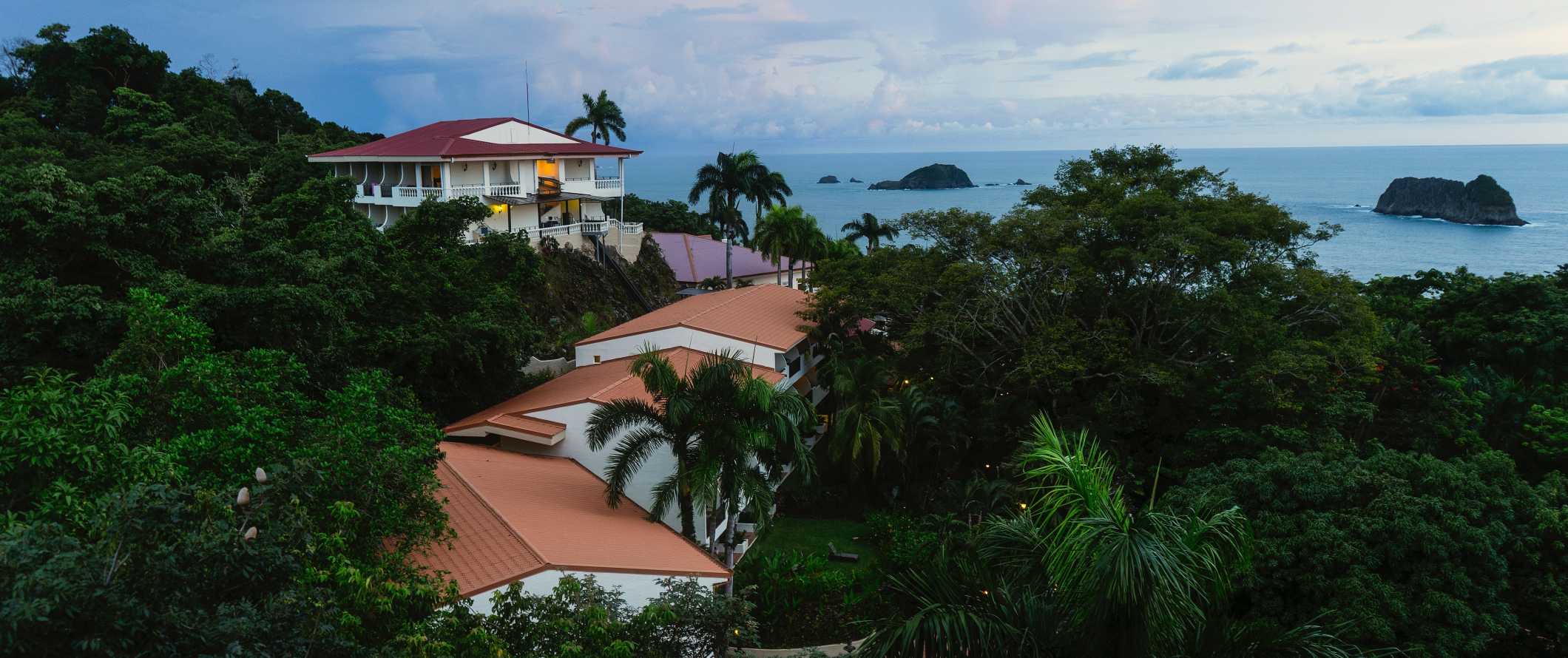
Hostel Costs – A bed in a hostel dorm with 4-6 beds costs between $15-25 USD per night, while dorms with 8 beds and up can be found for as cheap as $11-14 USD. Private rooms in hostels are usually $35-60 USD.
Free Wi-Fi is standard and some hostels also include free breakfast. The majority of hostels around the country also have self-catering facilities too. Many also have bars/restaurants on site. In the beach areas especially, some hostels even have pools.
Budget hotel costs – Budget hotels begin around $50 USD per night but average closer to $65-70 USD.Breakfast is often included and most have basic amenities like AC and TV. Many budget hotels even have pools, especially in beachside towns.
For Airbnb, private rooms start around $40-60 USD per night. For an entire home or apartment, expect to pay at least $75-125 USD. Prices double when not booked in advance.
For those traveling with a tent, camping is an option all around the country. Most campgrounds usually charge around $10 USD per night for a basic plot without electricity. Avoid wild camping as it is often unsafe and illegal in many areas due to the protection of natural areas.
Food – Costa Rican cuisine is centered around rice and beans, which are usually eaten for every meal. Potatoes, plantain, pork, and beef are also popular. Gallo pinto (rice and bean stir-fry) is the national dish. You’ll find it mixed with eggs for breakfast. Casado is a typical lunch dish, which consists of rice, beans, veggies, fresh salad, and your choice of meat. Generally, the food here is quite mild.
Note: While you can easily pay for tours and entrance fees in USD, in smaller establishments, such as local restaurants, you’ll need colones (CRC). Prices in this section are in CRC to reflect this.
At sodas (cheap local restaurants serving traditional cuisine), expect a filling meal of casado (rice, beans, veggies, and meat) to cost around 3,500-5,000 CRC. You can usually find empanadas and other savory snacks from traditional bakeries for around 2,000 CRC or less.
At a mid-range restaurant or in touristy areas (like right along the beach) expect to pay around around 7,000-8,500 CRC for a fish dish, 6,000-7,000 for a burger or a simple pasta dish, and 9,000-11,000 CRC for a steak dish or large pizza to share. Seafood dishes like lobster start around 12,000-17,000 CRC.
For fast food (think pizza or burgers) or a dish of fried rice at a Chinese takeout place, expect to pay around 4,500-5,000 CRC.
Domestic beer costs around 1,500-2,000 CRC, a glass of wine is 3,000 CRC, a cocktail is 3,500-5,000 CRC, and a latte/cappuccino is around 2,000 CRC. Bottled water is 1,000 CRC. Fruit smoothies, which you can get made either with water or milk, are 2,000-2,500 CRC.
If you plan on cooking for yourself, a week’s worth of groceries costs around 20,000-30,000 CRC depending on the area. This gets you basic staples like rice, beans, veggies, fruit, and some meat or fish.
Backpacking Costa Rica Suggested Budgets
If you’re backpacking Costa Rica, my suggested budget is $50 USD per day. On this budget, you can stay in a hostel, cook most of your meals, have some cheap street food, take public transportation to get around, and enjoy mostly free activities like hiking and the beach.
On a mid-range budget of around $135 USD per day, you can stay in an Airbnb or private hostel room, eat out at local sodas, enjoy a couple of drinks, take the occasional taxi, and do more paid activities like guided tours, surf lessons, and museum visits
On a “luxury” budget of $250 USD or more per day, you can stay in a hotel, eat out anywhere you want, rent a car to get around, drink as much as you’d like, and do as many excursions as you want, including diving and canopy tours. This is just the ground floor for luxury though. The sky is the limit!
You can use the chart below to get some idea of how much you need to budget daily, depending on your travel style. Keep in mind these are daily averages — some days you’ll spend more, some days you’ll spend less (you might spend less every day). We just want to give you a general idea of how to make your budget. Prices are in USD.
Costa Rica Travel Guide: Money Saving Tips
Costa Rica is one of the most expensive countries in Central America. Between food costs, accommodation, and activities, there’s a lot of ways to spend money. You can get by on a budget compared to other places in the world but it’s still an expensive place to visit. Fortunately, there are plenty of ways to save money while you’re here:
- Travel off-season – Late April to November is considered the rainy season and prices tend to be less expensive and the region is less crowded. If you’re on a budget, visit during this time.
- Avoid tour activities – There are a lot of great (but expensive) group activities and tours in the country. Skip them and do free activities like hiking, swimming, and relaxing at the beach instead.
- Eat at the sodas – “Sodas” are small family-run restaurants that specialize in inexpensive yet filling traditional meals, usually costing around 3,500-5,000 CRC. These hole-in-the-wall restaurants offer the best value in the country.
- Go camping – Some hostels let you camp on their property if you have a tent. If not, there are plenty of campgrounds around the country where you can pitch a tent. Usually, this costs around $10 USD per night.
- Visit the Caribbean side – Visiting the cheaper Caribbean side lets you see the beautiful country without the high prices of the popular Pacific destinations.
- Avoid the tourist shuttles – While local buses are a lot slower than tourist shuttles, they are also a fraction of the price (i.e the local bus from San Jose to Monteverde is $6 USD while a shuttle is $60 USD). If you aren’t rushed for time, take the local buses.
- Pack a water bottle – While the tap water is drinkable in most of the country, there are some remote and beach destinations where it’s recommended to drink bottled water. A reusable water bottle with a filter can help you save money (and thousands of plastic bottles) by purifying the tap water for you. My preferred bottle is LifeStraw .
Where to Stay in Costa Rica
Costa Rica has lots of fun, social, and affordable hostels. Here are some of my favorite places to stay in Costa Rica:
- Arenal Backpackers Resort (Arenal)
- Selina Puerto Viejo (Puerto Viejo)
- Stray Cat Hostel (San Jose)
- Costa Rica Backpackers (San Jose)
- Pura Natura Lodge Manuel Antonio (Manuel Antonio)
- Sloth Backpackers (Monteverde)
- Pura Vida Hostel (Tamarindo)
- Aracari Garden Hostel (Tortuguero)
How to Get Around Costa Rica
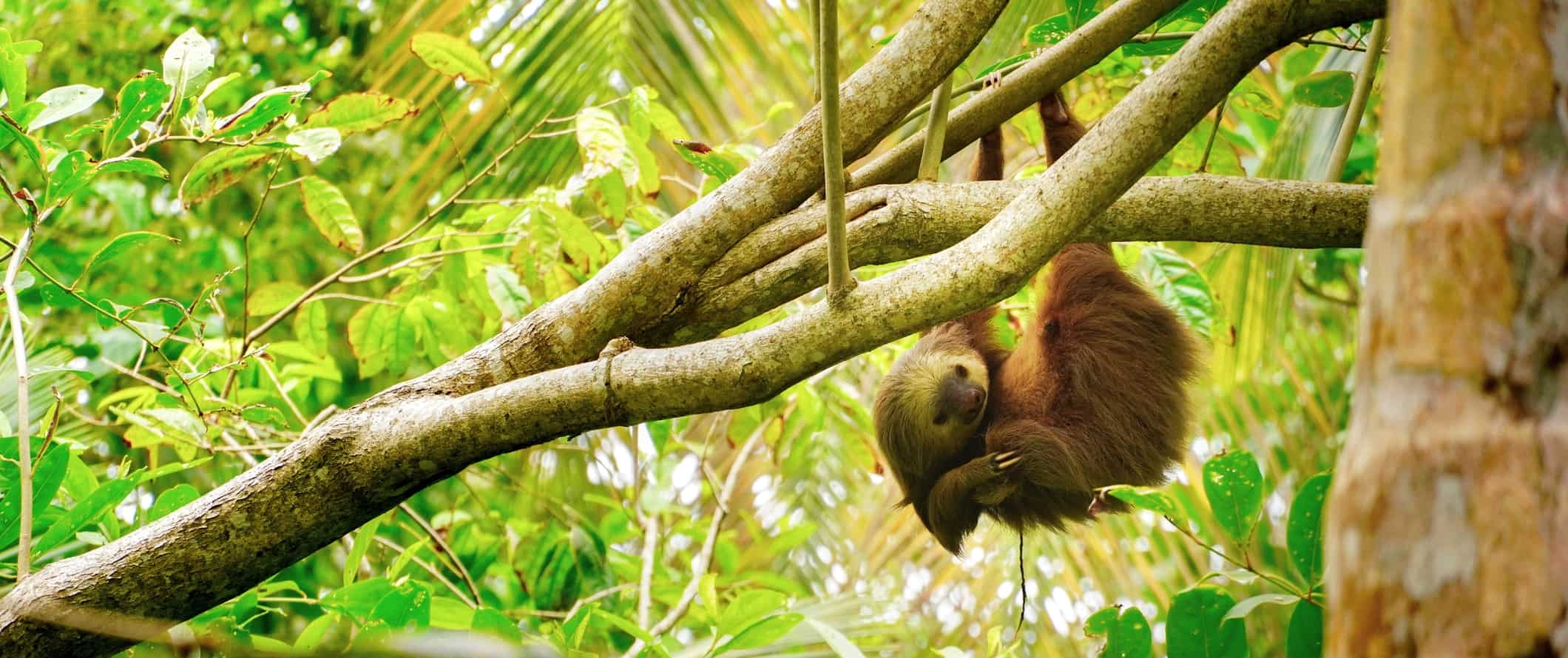
Bus – The cheapest and easiest way to get around Costa Rica is by bus. Short bus trips (under 3 hours) are usually around $2-10 USD while longer trips cost $10-20 USD. The Costa Rica tourism board has a comprehensive schedule and guide to help you plan your trip.
Minibus – Private minibuses or shuttles provide an easy way to get around the country, or to and from the airport. They are all over the place and are often quicker and more direct than the public buses (but also more expensive, starting at $50-60 USD). Ask your hotel/hostel staff for the local options as they vary around the country.
Flying – Since the country is so small, air travel within Costa Rica isn’t budget-friendly or efficient. I would skip this method of travel. It won’t save you time or money.
Car Rental – Car rentals are surprisingly affordable in Costa Rica. You can rent a car for as little as $30-45 USD per day. However, the roads here are not always great and drivers can be aggressive. Make sure you have insurance if you do rent a vehicle. Most rental companies require drivers to be 25 though some will rent to drivers who are 21. For the best car rental prices in Costa Rica, use Vamos (as a Nomadic Matt reader, you’ll get 5% off by using our link).
Hitchhiking – Hitchhiking isn’t common for long-distance rides, however, it’s possible in beach destinations or in remote places with less public transport. HitchWiki is the best website for additional hitchhiking tips and info.
When to Go to Costa Rica
Overall, temperatures and weather vary per region, but most people go to Costa Rica during the dry season, which takes place from December to April. Although it’s peak season and tourism is at its highest, there’s almost non-stop sunshine, ideal for enjoying the country’s beaches and rainforests. If visiting during this time, make all your reservations in advance since things fill up fast.
The rainy season is from May to November. This is when it’s cheapest to visit Costa Rica. It doesn’t rain all the time though and temperatures are still warm. The rain tends to lighten during June and July, making the country’s rainforests burst with life.
If you’re around the Caribbean coast and the Northern Plains, you can expect year-round humidity and temperatures somewhere in the 20s-30s°C (70s-80s°F). It’s not so humid in the North Pacific, but temperatures can get even hotter in this area during the dry season.
How to Stay Safe in Costa Rica
Costa Rica is one of the safest countries for traveling and backpacking in Central America . Most popular tourist towns are small and with little threat of violence. Solo female travelers should generally feel safe here, however, the standard precautions apply (never leave your drink unattended at the bar, never walk home alone intoxicated, etc.).
That said, it’s always good to play it safe. Petty theft (including bag snatching) is one of the most common types of crime here. Don’t flash your valuables and make sure they are always secure while you’re out. When going out for the night, only bring the money you need. Leave the rest of your cash and cards locked up in your accommodation.
There are some common scams here, including a taxi scam where the driver tells you the meter is broken once the drive has begun. For that reason, you should stick to metered taxis or negotiate a price in advance. You can read about common travel scams to avoid here .
If you rent a car, don’t leave any valuables in it overnight as break-ins do occur. Be mindful of missing road signs and potholes, as well as aggressive drivers.
Costa Rica’s natural wonders can be unpredictable. If you’re hiking in the jungle, always check the weather in advance and never stray from the trail. Doing so disturbs the fragile ecosystems, and opens yourself up to the possibility of encountering poisonous snakes and spiders. When in doubt, hire a guide. If you’re not a strong swimmer, stay out of the water. The currents and waves off the coast can be very strong, so heed signs and local advice on whether it’s safe to swim in a certain area or not.
If you experience an emergency, dial 911 for assistance.
The most important piece of advice I can offer is to purchase good travel insurance. Travel insurance will protect you against unexpected costs due to illness, injury, theft, and cancellations. It’s comprehensive protection in case anything goes wrong. I never go on a trip without it as I’ve had to use it many times in the past.
Costa Rica Travel Guide: The Best Booking Resources
These are my favorite companies to use when I travel. They consistently have the best deals, offer world-class customer service and great value, and overall, are better than their competitors. They are the companies I use the most and are always the starting point in my search for travel deals.
- Skyscanner – Skyscanner is my favorite flight search engine. They search small websites and budget airlines that larger search sites tend to miss. They are hands down the number one place to start.
- Hostelworld – This is the best hostel accommodation site out there with the largest inventory, best search interface, and widest availability.
- Booking.com – The best all around booking site that constantly provides the cheapest and lowest rates. They have the widest selection of budget accommodation. In all my tests, they’ve always had the cheapest rates out of all the booking websites.
- Get Your Guide – Get Your Guide is a huge online marketplace for tours and excursions. They have tons of tour options available in cities all around the world, including everything from cooking classes, walking tours, street art lessons, and more!
- SafetyWing – Safety Wing offers convenient and affordable plans tailored to digital nomads and long-term travelers. They have cheap monthly plans, great customer service, and an easy-to-use claims process that makes it perfect for those on the road.
- LifeStraw – My go-to company for reusable water bottles with built-in filters so you can ensure your drinking water is always clean and safe.
- Unbound Merino – They make lightweight, durable, easy-to-clean travel clothing.
- Top Travel Credit Cards – Points are the best way to cut down travel expenses. Here’s my favorite point earning credit cards so you can get free travel!

Costa Rica Travel Guide: Related Articles
Want more info? Check out all the articles I’ve written on backpacking/traveling Costa Rica and continue planning your trip:
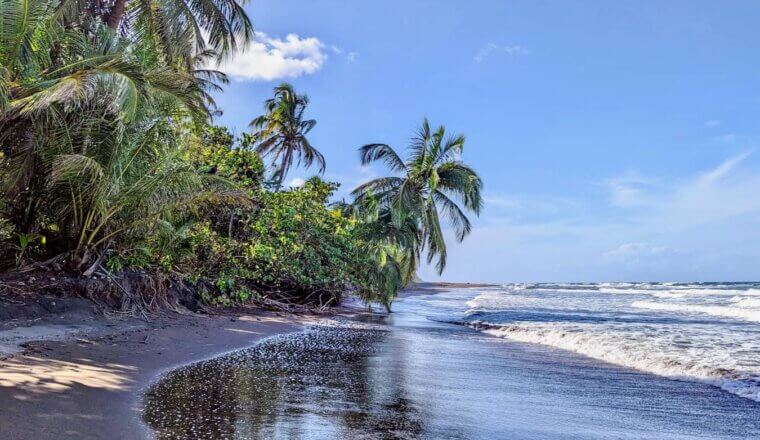
The Ultimate Guide to Renting a Car in Costa Rica

Do You Need Travel Insurance for Costa Rica?

The Best Tour Companies in Costa Rica
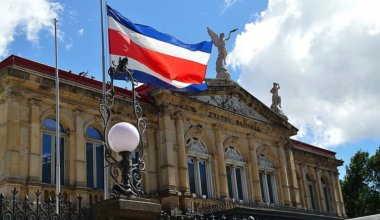
The 8 Best Hostels in San José, Costa Rica
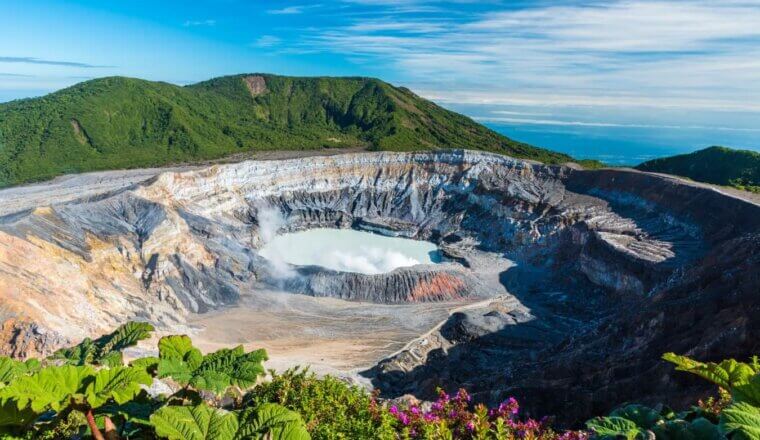
Is Costa Rica Safe to Visit?

Is Central America Safe to Visit?
Get my best stuff sent straight to you, pin it on pinterest.
- Where To Stay
- Transportation
- Booking Resources
- Related Blogs
20 Things I Wish I Knew Before Visiting Costa Rica
01/14/2024 by Emily Becker 10 Comments
This post was written by Emily Becker, a Costa Rica–based freelance writer for BMTM.
Costa Rica is a nature-lover’s paradise. With so many opportunities to hike, zip-line, kayak, and partake in all kinds of outdoor activities, it’s no surprise that ecotourism is so mainstream here. Some travelers are drawn to Costa Rica for the pristine beaches, perfect for relaxing the day away; others are in it for the adrenaline-pumping activities, like white-water rafting. The beauty of this country is that you can do both!
But after over a year of living here and traveling extensively in the country, I realized there were a few things I wish I had known before my first visit in 2022.
These are some tidbits of information, pieces of advice, and general things to know before you travel to Costa Rica, so you can have an awesome time and hopefully not repeat my mistakes and faux pas:
Table of Contents
1. Costa Rica can be very expensive.
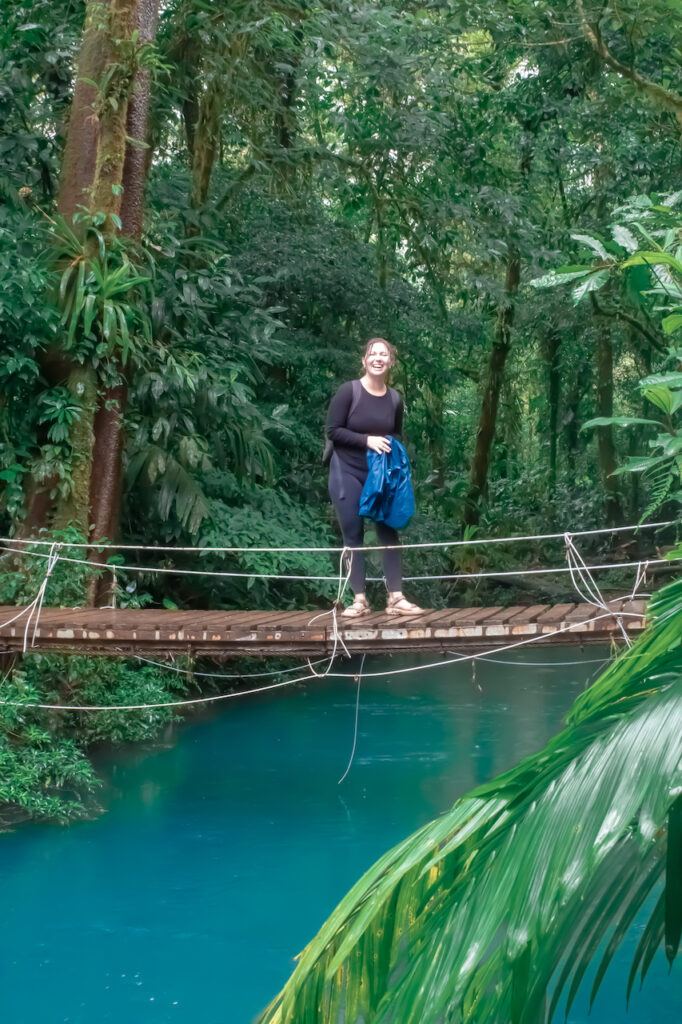
I anticipated this before my trip, but I was surprised at how expensive it was to travel through Costa Rica, even with prior knowledge that it was pricier than other Latin American countries. Especially in tourist hot spots like Manuel Antonio and La Fortuna , the cost of accommodation , food, and activities was comparable to some cities in the US. It’s pretty tough to find free things to do in Costa Rica, and entrance fees for the national parks start around $15 per day; tours start at $60.
Not all hope is lost for backpackers and budget travelers, though. There are plenty of affordable hostels in Costa Rica, many of which include breakfast and have less expensive tour options. My money-saving advice is to choose affordable lodging but splurge on activities. After all, you’ll likely be spending most of your time outside of your hotel having a blast outdoors anyway!
2. For cheap eats, go to the sodas .
One way to save money while traveling through Costa Rica is to dine in the sodas , i.e., mom-and-pop restaurants. These are always clearly marked as such, and serve up hearty meals that capture the essence of daily Costa Rican cuisine. The most typical plate is called a casado , which includes the traditional gallo pinto (rice and black beans), with some kind of meat or fish and a salad. These usually cost around 4,000-6,000 colones ($8-12 USD) and are filling.
To save money on food, you can also choose a hostel or hotel that includes breakfast and then go to sodas for lunch. Considering that entrees at restaurants in touristy areas can cost $12-20, sodas are a bargain.
-READ NEXT-
How Much Does a Costa Rica Trip Cost?
3. The weather can change in an instant.
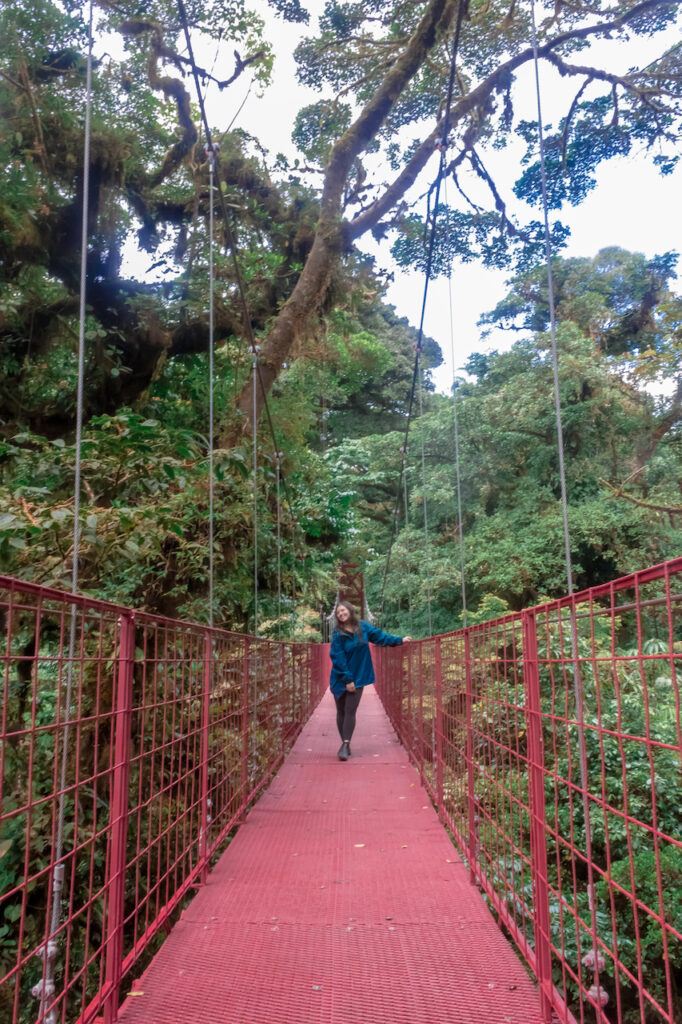
Sometimes, I still can’t believe how sunny skies can turn into a complete downpour in the blink of an eye. Flash rainstorms are common, especially if you plan to visit Costa Rica during the wet season (May to November). However, this doesn’t have to put a damper on your trip.
Go to Costa Rica prepared for heavy rain, mud, and hot and cold weather. Have at least one pair of waterproof shoes, a rain shell, a waterproof bag, and layers for chilly weather if you go somewhere like Monteverde, where the higher altitude means colder temps. If you plan to spend the day in nature at a national park, always bring your rain gear with you, even if it doesn’t look like it will rain.
4. Renting a car is the way to go…
Having a car can be a game changer in Costa Rica. Many of the places I wanted to visit were either too far (and expensive) to get to via taxis, or there was no public transport available. I met a local in Uvita who told me that having a car isn’t just a luxury, it’s a necessity.
If you want to get to a place before the tour crowds arrive, having a car is the only way to do it. For example, when I visited the La Fortuna waterfall on a tour, I didn’t have the freedom of choosing when to visit, and there were already many people there. We also encountered rain when we arrived, which I could have avoided if I had had a car.
The big downside of renting a car in Costa Rica is the price. I found out that rates start at $80/day. Booking online is a gamble, too, as often tourists are given a much higher rate when they pick up the car than what they were quoted. A rule of thumb: if the quote is less than $80/day, there’s a good chance that there will be hidden fees you’ll have to pay when picking it up.
If you decide to rent a car, do not skimp on insurance. After living here for over a year with my own vehicle, I’ve learned that accidents are prevalent and that driving here can be risky.
5. …but public transportation can be cheap and easy.
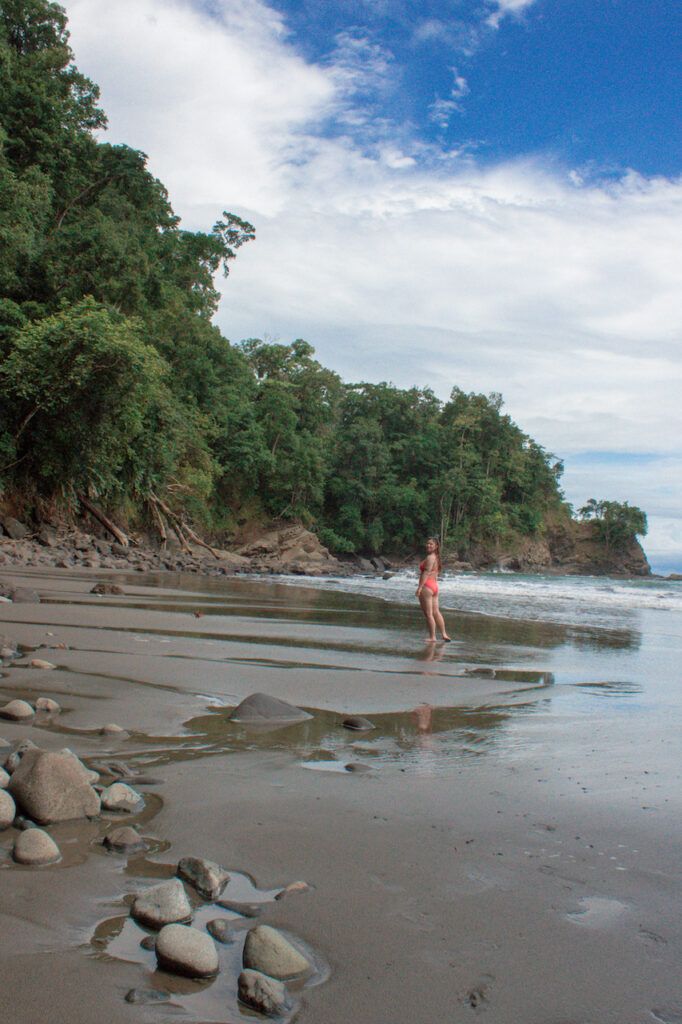
If you’re alone and traveling on a budget, relying on public transportation to get from place to place in Costa Rica is a great choice most of the time. Although renting a car allows for more flexibility for where you go and when, public transportation is totally doable between cities. Plus, it’s incredibly cheap and easy to navigate.
If you’re starting your journey in San José, you can easily hop on a bus to any of the major touristy areas in the country. For example, to get to Uvita on the Pacific coast, it only cost me about $7 USD, and the 7:30am bus arrived there around 11am, ahead of schedule. However, once I got to Uvita, it was challenging to get from place to place via public transportation, hence why I got stranded at Playa Ventanas ( read about that here ).
Plus, if you get somewhere like La Fortuna, where many of the main attractions are hard to reach without taking a tour, you can rent a car for just a couple of days. I wish I had known this beforehand, as it would have improved my experience there.
6. The national parks are fantastic.
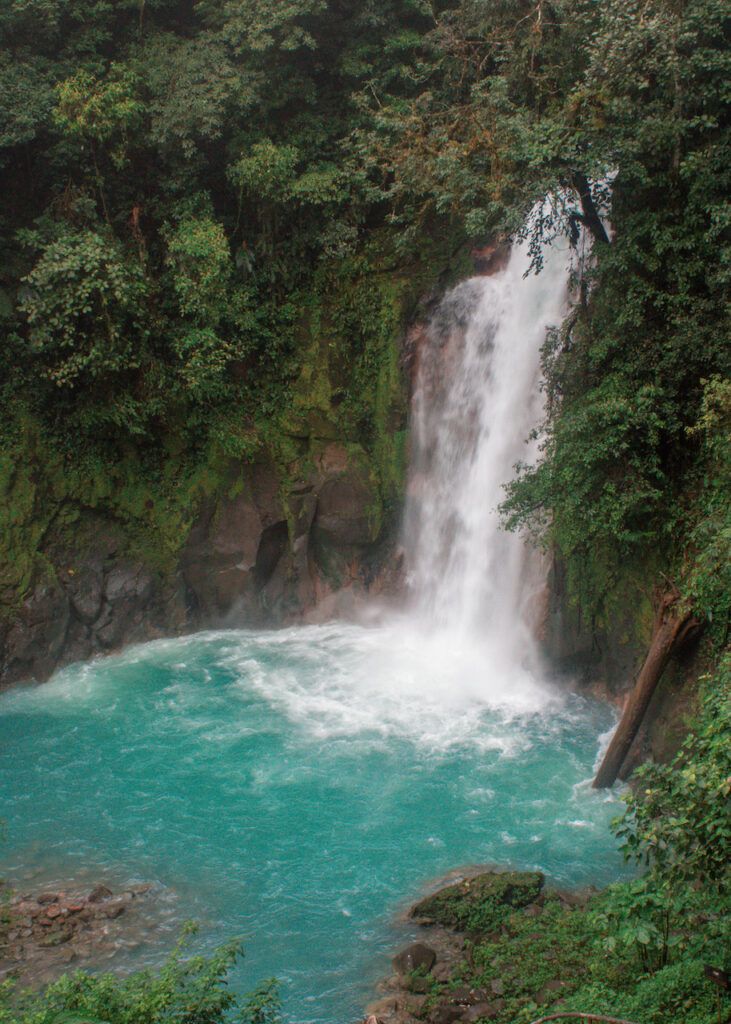
Being from the States, I have been spoiled all my life with amazing national parks. Let’s just say, the bar is pretty high. However, Costa Rica’s blew me away with their preservation, accessibility, and overall beauty. From the wild trails through Manuel Antonio to the waterfall in Tenorio Volcano and the Amazon-like canals of Tortuguero, these places are astounding.
Since Costa Rica is home to 6% of the world’s biodiversity, it’s no surprise that the parks are bursting with life. Even though I knew this, it never ceased to amaze me when I saw it with my own eyes.
Since my first trip to Costa Rica in 2022, I have visited Cahuita National Park, Irazú National Park (the Prussia section), and many others. I recommend stopping in any and all parks that are close to your route, as each of them has something different to offer, due to Costa Rica’s numerous microclimates.
7. There are wild animals nearly everywhere.

Speaking of Costa Rica’s impressive biodiversity, national parks aren’t the only places to find wild animals. From mischievous monkeys to roadside sloths and the occasional shower-drain scorpion, there seem to be wild animals everywhere here.
I wish I had known how common critters are inside accommodations. After finding a couple of them in my bag, I realized that I needed to keep it zipped at all times. Luckily, I wasn’t stung or bitten by anything, but there were a couple of close calls.
8. …but if you want to see them, hire a guide.
While wild animals are plentiful here, it isn’t always easy to see them without a guide. I’ve been lucky to see sloths on the side of the road and monkeys swinging in the trees outside my hotel window, but if you want to get the most out of the wildlife viewing here, a nature guide is your best bet. Those in Costa Rica are highly trained to spot animals, and they bring binoculars with them to help visitors get the best views.
The difference between when I went to Rio Celeste with a guide and when I went recently without one was huge. The second time around, I thought, “I’ve been here, and I’ve seen so many animals. Of course I’ll see tons this time!” Wrong. The first time I went was far better, because my guide’s expert eye caught sight of animals I would have otherwise missed.
9. The two coasts are very different.

Since I have visited both the Pacific and Caribbean coasts, I’ve seen how diverse such a small country can be.
For one, the beaches are very different. The Pacific coast has small coves, with rocky cliffs and waves ideal for surfing. The sand is mostly golden and glistens beautifully when the sun sets. I also noticed that it was much more Americanized and more touristy overall, with more expensive restaurants.
The Caribbean coast, on the other hand, has a larger Afro-Latino population and therefore a different cultural landscape than the west coast. Puerto Viejo, for example, is known for its bolder flavors, impromptu dance parties, and reggae music blasting everywhere. If you are excited to dive into Costa Rican culture, the Caribbean side is an ideal place to do it.
10. Addresses aren’t really a thing.
Even in the largest city, San José, addresses (as we know them) don’t exist in Costa Rica. Even on official documents, Costa Ricans give descriptions of their address instead of a number and a street. For example, somebody might describe their address as “a big white house next to the Catholic church.”
This might not be an issue when you travel to Costa Rica, as most taxi drivers know the main landmarks and hotels. However, if you stay in an Airbnb, it can be difficult to describe its location to a driver. In any event, make sure you have an offline map (I use the app maps.me), so you can show your driver where you want to go.
11. Sometimes, tours really are worth the money.
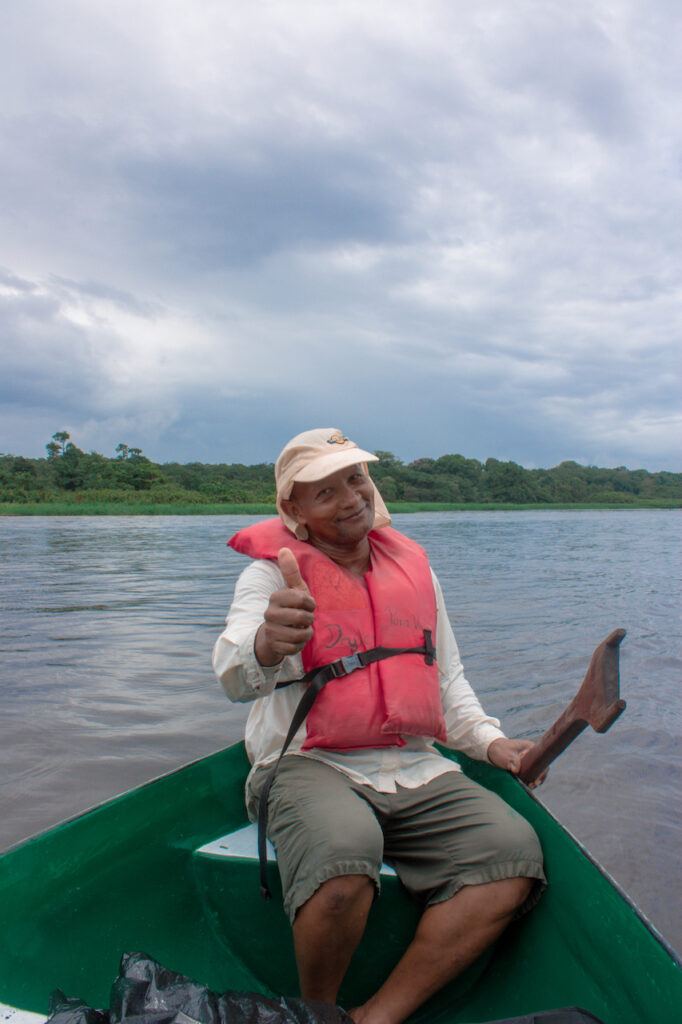
I experienced sticker shock when looking at the prices for some of the tours in Costa Rica. After going on a few, though, I realized that some of them were worth it (while others were not).
I recommend booking through GetYourGuide when you can. The platform gives a detailed description of what is included in the tour and what you can expect in terms of how long it will take, what to bring, where you’ll be going, etc.
If you wait to book your tours until you get to your destination, always make sure to do so at the tour office itself. I talked a bit about this in my Costa Rica safety guide , but basically, there are scammers on the street who try to get tourists to book with them.
Overall, the best experience I had on a tour was in Tortuguero . I booked directly with the guide himself, and his expertise, kindness, and quirkiness were what made the experience worthwhile. Plus, booking directly with the guide meant the tour was much more affordable than if it were with a large company.
You won’t find this kind of direct offer everywhere in Costa Rica, but you can look for mom-and-pop tour companies with a more down-to-earth feel.
12. Prepare yourself for tourist traps.
Beyond the abovementioned tour scams, there are quite a few tourist traps throughout Costa Rica. I find this pretty unsurprising, considering how touristy the country is overall.
One is the expensive shuttle services that are not much faster or more reliable than simply taking a public bus. If you are not renting a car, check out the public transportation options before opting for a shuttle. If you are going from San José to pretty much anywhere in Costa Rica, the bus will likely be just as easy. For other routes, like between La Fortuna and Tortuguero, a shuttle is definitely a great option, because public transportation takes twice as long. I use Rome2Rio to get a general idea of public transportation routes, but keep in mind that that it isn’t always 100% accurate.
Other tourist traps in Costa Rica include hokey restaurants with Americanized menus and astronomical prices, and overpriced souvenir shops, which you’ll likely find at the exit of national parks and ecological reserves.
– READ NEXT-
Is Costa Rica Safe? My Take as a Solo Traveler
13. Get to places as soon as they open.
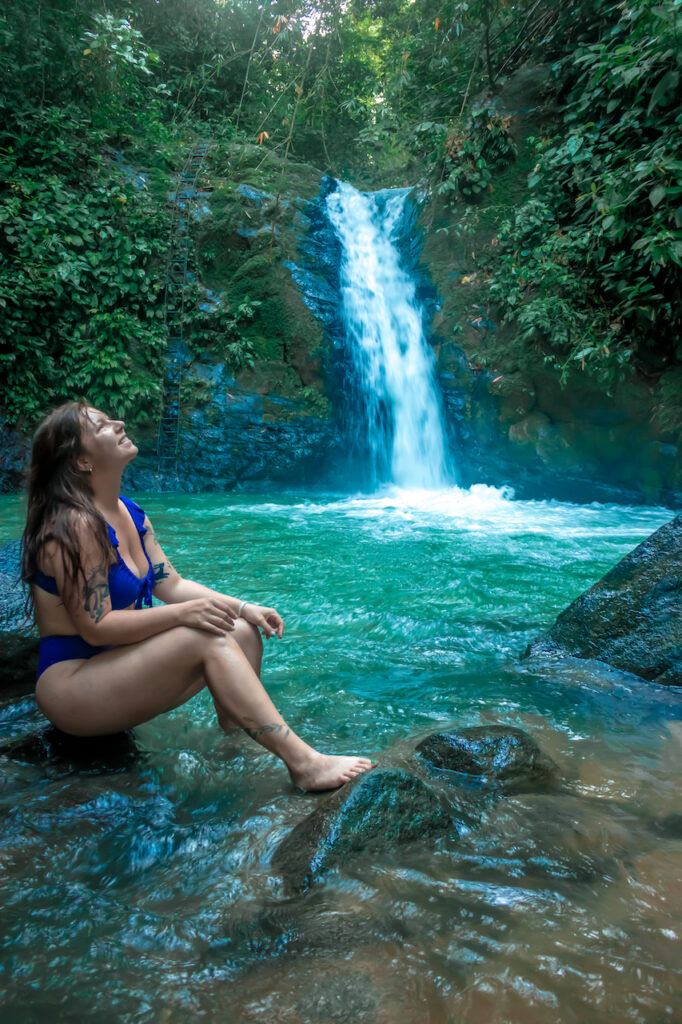
Even during the low season, from May to November, there is a steady stream of tourists in Costa Rica. That means the best places get packed in the late morning and early afternoon. If you are like me and enjoy being in nature without too many other people around, make sure to get to your destination first thing in the morning.
The sun rises around 5am during most of the year in Costa Rica, which meant a lot of very early wake-up calls for me. It was worth it, though! I enjoyed visiting the waterfalls, swimming holes, and jungle paths — and even just walking down the street — at this hour. Going to these places early also meant I could spend more time there, just soaking in the beautiful surroundings without any distractions.
Also keep in mind that tour groups tend to arrive at big attractions around the same time. I noticed that sites would get busy around 9 or 10 in the morning, then clear out around noon, then get busy again around 2 or 3 in the afternoon before the park closed at 4pm. The best time to visit busy spots, like the La Fortuna Waterfall or Manuel Antonio National Park, is right when they open (usually 7am) — or during lunchtime if you don’t mind the scorching sun.
14. Make sure to carry enough cash.
Some smaller and more remote places in Costa Rica, like Tortuguero, for example, don’t have ATMs readily available. Considering that some hotels and hostels charge a 2-5% fee to pay for accommodations with a card, having cash on hand is a good idea. Carrying large amounts of cash can be nerve-wracking, sure, but if you spread it out among multiple bags and pockets, you lessen the risk of losing it all in one go.
Also, try to have colones (the local currency) instead of dollars when possible. Although Costa Rica uses dollars, some small restaurants and shops prefer that patrons pay in colones. The value of the dollar has also been steadily decreasing since I moved here in February 2023.
15. San José is worth a couple of days.
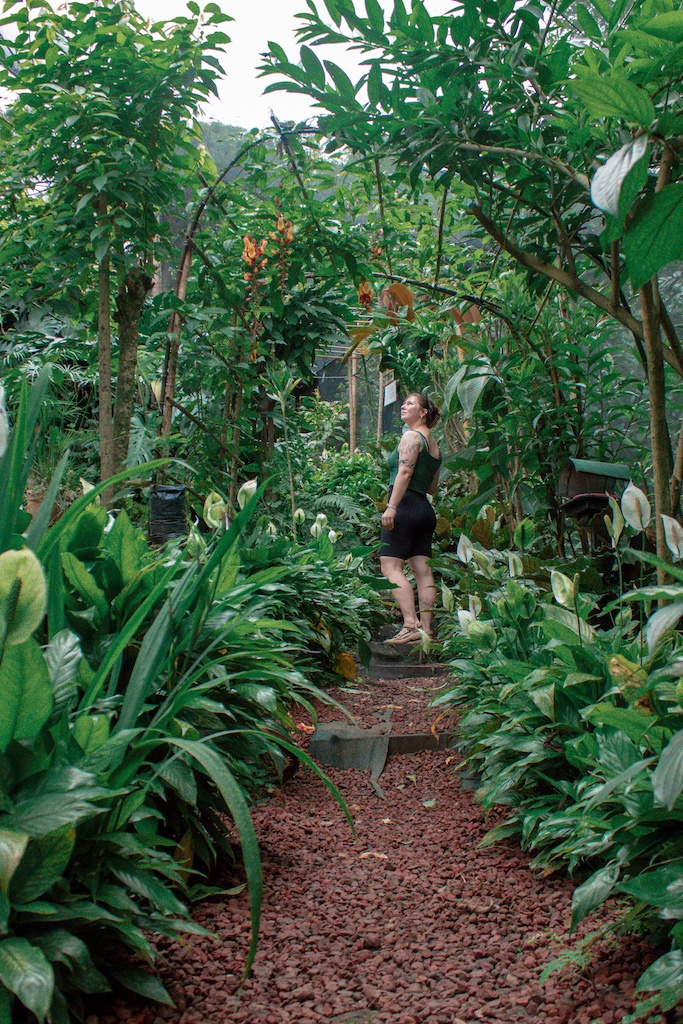
Too many travelers pass up the opportunity to spend a couple of days in Costa Rica’s capital city, San José . It has a reputation for being a dirty, even dangerous place, with little to do. I disagree with this, and I actually really enjoyed exploring San José at the beginning and end of my trip in 2022. Now, I live just 30 minutes outside of town, and I constantly find new and interesting things to do there.
San José is Costa Rica’s cultural capital. There are great museums, a thriving art scene, and some of the country’s best restaurants (like Silvestre!) and bars. I loved visiting the Spirogyra Butterfly Garden, venturing out to the Hacienda La Chimba, and checking out the nearby city of Cartago.
16. Uber is illegal but cheaper than taxis.
In larger cities like San José and even La Fortuna, Uber is available, safer, and even cheaper than taking a taxi. However, it’s technically illegal throughout Costa Rica. It’s common for drivers to ask you to sit in the front seat so as not to raise suspicions that they are driving for Uber. I’ve never had an issue taking Ubers in Costa Rica, though.
Also, considering the point above about addresses, Uber is much easier to use because your driver has your exact location and that of your drop-off point. Otherwise, it can be hard to explain to a taxi driver (especially if you don’t speak Spanish) where you need to go.
17. A little Spanish goes a long way.
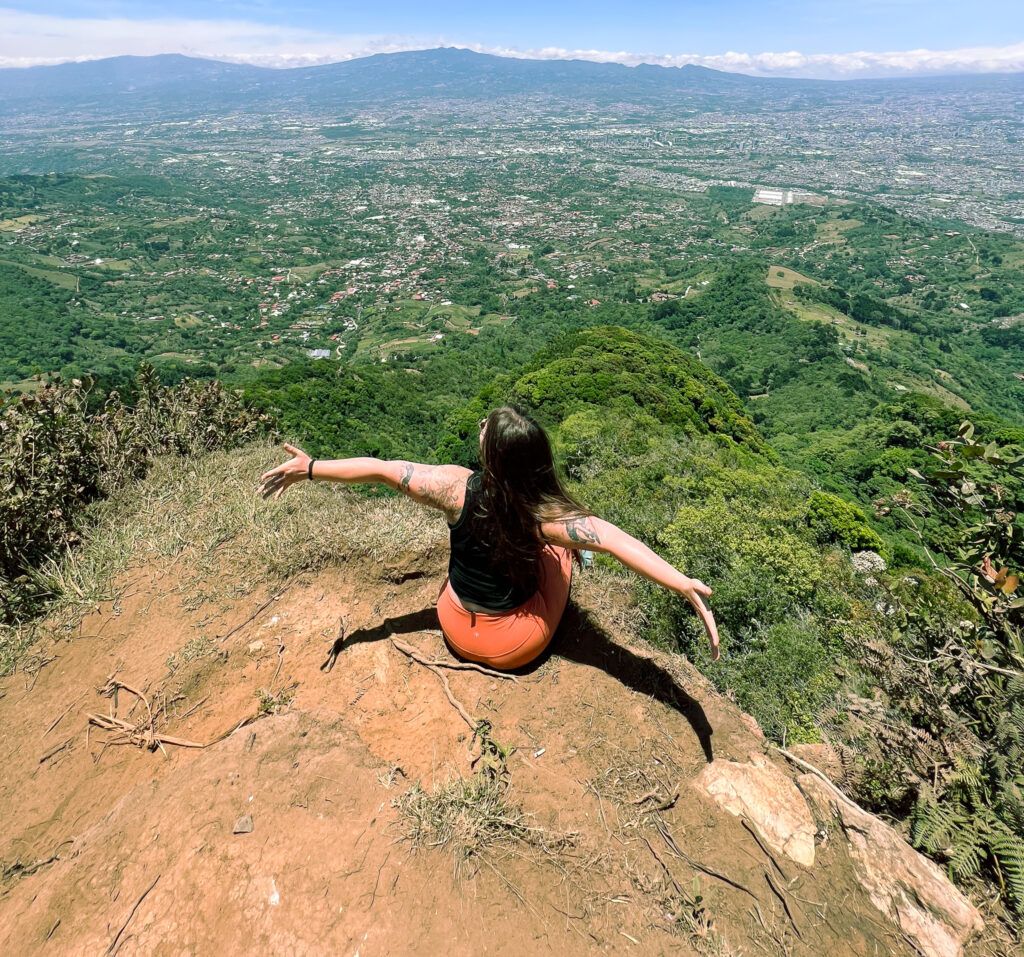
I might sound like a broken record on this one, but knowing (at least) a few phrases of Spanish can be a game-changer in Costa Rica. Locals appreciate it when visitors speak Spanish, even if it’s just “hola” or “gracias.” I know my life is significantly easier here because I speak Spanish, and that was also true when I came here for the first time as a backpacker.
If you don’t have any Spanish knowledge before you come, I recommend downloading an offline translator if you need to communicate in a pinch. While many Costa Ricans speak English, there’s no guarantee that your taxi/Uber driver, waiter, etc. will.
18. Costa Rica’s tourism infrastructure is one of the best in the world.
Although having some basic Spanish knowledge is helpful, Costa Rica’s impressive tourism infrastructure makes it one of the easiest places to travel for non-Spanish speakers and first-time international travelers. Companies like Intrepid and G Adventures offer multiday (even multiweek) tours on which everything is meticulously planned. Hotels often offer airport pickup and dropoff, along with many other perks. And nearly 13% of the population works in tourism . That means that there are people willing to help visitors around every corner.
19. Yes, you can drink the tap water.
I lived in Mexico for four years before I moved to Costa Rica, so imagine my surprise (and excitement!) when I learned that you can drink the tap water here. There are exceptions, but there will likely be signs letting you know if you can’t drink it. This is a stellar tip, because you can bring a smaller water bottle with you on hikes or long walks, knowing that there will be places where you can fill it.
20. Tips are usually included in the final price.
In Costa Rica, most restaurants will charge a 10% service fee, which is the same as the tip. If this has been added to your bill, there’s no need to tip. Of course, if you’d like to tip your wait staff, go for it! But it’s certainly not expected.
There are some things that are hard to prepare for before heading to a new place. These tips were all things I either didn’t know or only knew a little bit about before I went for the first time. I hope they help you prepare for your trip, so you can enjoy the magic of Costa Rica.
If you’ve been to Costa Rica, what other helpful tips do you wish you knew before you went?
*Some links in this post are affiliate links for products and services we personally use and love. Any purchase you make through them supports us at no extra cost to you. Thanks so much!
About Emily Becker
Emily Becker is a digital nomad based in Costa Rica. She's been traveling on and off since 2014 and has visited 15 countries—planning to tick many more off her bucket list. In addition to writing for BMTM, she works as a copywriter and project manager.
Leave a Reply Cancel reply
Your email address will not be published. Required fields are marked *
Save my name, email, and website in this browser for the next time I comment.
subscribe to our newsletter
This site uses Akismet to reduce spam. Learn how your comment data is processed .
cupskill says
08/17/2022 at 12:37 pm
Nice place…….
08/21/2022 at 3:33 pm
Hi Emily: Thanks for these important tips to give us a step up regarding making our Costa Rica trip that much better and how to avoid pitfalls. I have not been to Costa Rica, but one thing that I did not think of doing until you described Costa Rica would be to try the sunrise over the ocean on a Caribbean beach and on the same day see the sunset over the ocean on the Pacific side! Is that doable and/or worth it? 🙂
08/22/2022 at 9:23 am
Hey Gil! Yes, in theory you could drive from one side of the country to the other to see the sunrise & sunset, but I’d guess that it would mean spending the whole day in the car. Maybe not worth it as the sunsets are only vibrant and colorful if the weather conditions are right (ie. not raining). If you try it, let me know how it works out! Sounds like a fun mission. 🙂
RUSTY GREEN says
04/19/2024 at 10:25 pm
WHICH IS THE BEST PLACE TO LIVE COSTA RICA OR PANAMA CANAL.. IM RETIRED MILITARY AND POLICE.. I DO NOT WANT TO LIVE IN THE U.S. IM SOO TIRED OF PAYING MY 2700 DOLLARS HOUSE PAYMENT..AND THE CRIME IS JUST CRAP.. IF YOU HAVE A ANSWER…
Emily Becker says
04/22/2024 at 10:09 am
Hi there! I’ve lived in Costa Rica for about a year (moved in February 2023) and there are a few distinct areas where retirees tend to settle. One is the central valley (near San José, specifically the areas of Santa Ana and Escazú), another is Guanacaste (near Nosara), and another is the mountainous region parallel to the Pacific Coast (Tinamaste). The cost of living here is comparable to some places in the USA, but the quality of life (in my opinion) is much better. Fresh food easily accessible, low crime rates, and stunning nature everywhere in the country. I recommend looking for Facebook groups with retirees in Costa Rica and asking around there. 🙂 Pura vida!
01/31/2023 at 11:32 am
Great info, thank you!
Andrea says
03/10/2023 at 2:06 pm
I am leaving in a week for CR and am solo. I appreciated your articles and found them helpful. Thank you for sharing!!
03/25/2023 at 8:50 am
Thank you for all the tips! I’m traveling with a group of women this October for a woman’s retreat . We will e spending one night in San Juan before heading to our destination (4 hours away)! I’m really thankful for you telling me that Uber is illegal!
03/27/2023 at 3:01 pm
Hi Dee! Uber is technically illegal but it’s totally fine to use in Costa Rica. The driver will just ask you to sit up front. Keep in mind that Uber isn’t widely available and is mostly used in San José and the surrounding areas.
MIGUEL BONILLA says
08/30/2023 at 11:41 pm
Hi Emily, I’m traveling with my kids to Costa Rica on February, what is my best option to get to the fortuna from the airport? And thank you for all your tips. Miguel

- About Costa Rica
Knowing about Costa Rica before you go!
Costa Rica is a country located in Central America that is ranked as one of the most visited international destinations. One of Costa Rica’s main sources of income is tourism. Costa Rica is a democratic and peaceful country and it has not had an army since the year 1948.
Although the country is small and it covers only 0.03 percent of the surface of the globe, it proudly shelters 5 percent of the existing biodiversity in the entire world. Twenty six percent of the country is composed of conservation and natural protected territory.
Furthermore, 2018 has become a magnet for meeting tourism with the opening of the National Congress and Convention Center (CNCC), which can welcome some 4,600 people to its meetings. Located eight kilometers from the Juan Santamaría International Airport and just 10 kilometers from San José, the new space will bring together people from different backgrounds and cultures to exchange experiences and new businesses.
Costa Rica is also an attractive country for investment and offers great potential for the establishment of important multinational companies, thanks to the outstanding academic level of its population, as well as the high standard of modern services and social and political stability.
General information
Costa rica facts.
Costa Rica is located in Central America, connecting North and South America. It borders Nicaragua to the north and Panama to the south. Because of its location, warm weather predominates, but many different microclimates are found throughout the country. According to the National Statistics and Census Institute, Costa Rica has a population of approximately 4,890,379, of which 2,467,829 are men and 2,422,551 are women.
The country is divided into seven provinces (San José, its capital, Alajuela, Cartago, Heredia, Puntarenas, Guanacaste and Limón), 81 cantons and 463 districts. It stretches across 51,100 square kilometers, which is the size of the country. It is a democratic, free and independent Republic. Most of the population professes the Catholic religion and enjoys freedom of religion. Its currency is the colón, and its official language is Spanish.
One of the most important and recognized characteristics of the country was the abolition of its army on Dec. 1, 1948 by former President José Figueres Ferrer. On that date, peace became one of the main principles of Costa Rica, differentiating it from other Central American countries that utilize the military as a method of defense.
Costa Rica has national patriotic symbols that represent part of the identity and traditions of Costa Ricans, particularly the National Anthem of Costa Rica, the Shield of the Republic of Costa Rica, the National Flag, the White-Tailed Deer, the Guaria Morada (a type of orchid that is the national flower), Marimba, Oxcarts, the Yigüirro (or clay-colored thrush, the national bird), the Guanacaste Tree, The Pre-Columbian Spheres of Diquís, the manatee, the Torch of Independence and the Crestones of Chirripó National Park.
Official language:
Spanish. A large portion of the population speaks English as a second language.
Official religion:
Roman Catholic; complete freedom of religion.
Official currency:
Costa Rican Colón (plural colones) (¢)
Administrative divisions:
Costa Rica is divided into seven provinces: San José , Alajuela , Heredia , Cartago , Puntarenas , Guanacaste , and Limón. Each province is divided into cantons, which are further subdivided into districts.
The country’s marine territory consists of the Isla del Coco, a World Natural Heritage site, located 548 km from Cabo Blanco, in the Pacific Ocean. It has a land area of 2,400 hectares and a marine territory of 73,100 hectares.
National symbols:
- The guaria morada: The guaria morada (Cattleya skinneri), a species of orchid, was declared the national flower of Costa Rica on July 15, 1939.
- National flag: The national flag of Costa Rica. Under Decree no. 768 of October 25, 1949, National Flag Day (Día del Pabellón Nacional) is celebrated on November 12th of each year. The National Flag of the Republic is a tricolor with five horizontal bands: a red band in the center between two bands of white, each of which is followed by a blue band. The width of each band is one-sixth of the total width of the flag, with the red band in the center taking up two-sixths of the width. The coat of arms must be placed in the center of the red band on a white background.
- Guanacaste tree: Enterolobium cyclocarpum. On August 31, 1959, it was declared as the national tree of Costa Rica.
- Coat of arms of Costa Rica: The Coat of Arms shows three volcanoes and a wide valley between two oceans, with a merchant ship in each ocean. A rising sun is shown on the far left of the upper line, which marks the horizon. The crest is closed by two palm fronds that are united by a wide, white sash bearing golden letters that spell out “República de Costa Rica”.
- Clay-colored thrush: The clay-colored thush (or yigüirro) was declared the national bird of Costa Rica in 1977 in the interest of the protection of this and other bird species in the country.
- The traditional ox-cart: The ox-cart, or carreta, was declared a national symbol of labor in 1988. While they are no longer used to transport coffee, the colorful paint and the original designs made by artisans have made them famous around the world.
- The national anthem : declared a national symbol on June 15, 1949 by Decree no. 551. The music was written in 1852 by the poet Manuel María Gutiérrez and the lyrics were written by José María Zeledón.
- The white-tailed deer : in accordance with Legislative Decree No. 7497, it has been the national symbol of Costa Rican wildlife since June 8, 1995.
- The Marimba : declared the national instrument par excellence by Executive Order No. 25114-C on September 3, 1996. It is considered to be the musical instrument that is associated with the most diverse popular festivals in Costa Rica.
- The Torch of Independence : declared a national symbol on September 14, 2005 by Decree No. 32647-C. Since 1964, the torch tours Central America as a representation of the freedom and independence of Central American peoples.
- The Crestones of Chirripó National Park : Declared a national symbol by Law 8943, published in the Official Journal La Gaceta No. 170 on September 5, 2011. The Costa Rican Tourism Board has been authorized to promote them as a tourist attraction in Chirripó National Park.
- The manatee : was declared a symbol of Costa Rica’s marine fauna and of the hope and interest of Costa Rican children in protecting natural resources contained in the national territory by Law no. 9264 of August 7, 2014, published in the Official Journal La Gaceta no. 183 on September 24, 2014.
- Pre-Columbian Spheres: In 2014, UNESCO chose the Diquís grouping of villages belonging to pre-Columbian chieftainships with stone spheres as a World Heritage Site. The Costa Rican Legislative Assembly declared them to be a national symbol of the country following the approval of Law no. 9265 of August 11, 2014, published in the Official Journal La Gaceta no. 201 on October 20, 2014. Archeologists believe that the stones were placed there by the indigenous peoples of the area between 300 B.C. and 300 A.D., though the sculptures have not yet been able to be scientifically dated.
- The National Theater: On February 5 of this year, the then-President of the Republic, Luis Guillermo Solís, signed the law declaring the National Theater of Costa Rica as a National Symbol of Historical Archeological Heritage and Cultural Liberty. The law was approved in a second reading by 40 deputies.
Main distances:
- 246 km (153 mi) by land from Puntarenas to Limón.
- 534 km (337 mi) by land from Peñas Blancas, at the Nicaraguan border, to Paso Canoas, at the border with Panama.
- Highest point: Cerro Chirripó, at 3,819 meters (12,529 feet) above sea level.
- Highest volcano: Volcán Irazú.
- Largest volcanic crater: Volcán Poás crater, with a diameter of 1,320 m (43,307 ft) and a depth of 300 m (984 ft).
Electric coverage:
97% of the national territory has electric power. Residential voltage is 110V.
Office hours
Public sector: Monday to Friday, 8:00 a.m. to 4:00 p.m. State banks: Monday to Friday, 8:00 a.m. to 3:00 p.m.
Private sector
Monday to Friday, 9:00 a.m. to 6:00 p.m. The majority of businesses operate on Saturdays and Sundays until midday.
The political system is represented by three powers, which are The Executive Power, the Legislative Power and the Judicial Power. The Elections Supreme Court is considered the fourth power of the Republic. Every four years national elections are carried out. Among other positions of popular representation, the President of the Republic is elected through direct representation by secret ballot.
Capital city: San José.
Country area: 51,100 km2 (19,730 square miles).
Heritage and culture
Costa Rican culture is in many ways a reflection of its racial diversity. The predominant influence has long been European, which is reflected in everything from the official language -- Spanish -- to the architecture of the country's churches and other historic buildings. The indigenous influence is less visible, but can be found in everything from the tortillas that are a staple of the Costa Rican diet, to the handmade ceramics sold at roadside stands.
An important aspect of Costa Rica's cultural legacy is our love for peace and democracy. The Ticos proudly point out the nation is one of the few Latin American countries where a military dictatorship has not dominated politics.
Costa Ricans are proud to have more than a century of democratic tradition and more than 68 years without a military. With the money saved, the country is better able to focus on improving the quality of life of its citizens. This is one of the many reasons why Costa Ricans, also known as “Ticos,” are such a happy and welcoming people.
Famous for their hospitality, Ticos often go out of their way to help to visitors with directions or offer other assistance if needed. It is said that “Ticos” are the nation’s best asset. Once visitors experience their hospitality, visitors too are convinced.
& climate
Infrastructure.
Rugged highlands are found throughout most of the country, ranging from approximately 1,000 to 2,000 meters (3,000 to 6,000 feet above sea level). The Guanacaste Mountain Range, Central Mountain Range, and Talamanca Mountain Range are the main mountain ranges extending the entire length of the country. There are several active volcanoes (Arenal Volcano, Irazu Volcano, Rincon de la Vieja Volcano and Turrialba Volcano) and the country’s highest mountain (Chirripo Hill) with a height of 3,819 m/12,530 ft. The country has a relatively long coastline in both the Atlantic and Pacific oceans, as well as a number of rivers and streams that attract specialist kayakers and rafters from all over the world.
Costa Rica is a tropical destination. Its look and landscape changes throughout the year, and the country is in a constant state of renewal. As such, every time of the year is a great time to visit Costa Rica. Tailor your trip to your interests, and your experience in Costa Rica will be fulfilling beyond imagination.
The Costa Rican landscape is one of great variety, filled with lush vegetation and stunning displays of flora. With jungles, beaches, and a wide array of terrain and climate zones, Costa Rica is a playground for the adventurous. Whether it’s rafting, hiking, wildlife viewing or just relaxing on the beach, everything under the sun is available to you.
No matter the season or region, there is always something exciting to discover, or uncover. For those willing to go o the beaten path in Costa Rica, the rewards are endless.
Costa Rica’s richness also lies in the cultural diversity of our people. Currently, there are ethnic groups and colonies of immigrants including African descendants, Chinese, Hebrew, Lebanese, Italian, etc.; as well as the indigenous populations of the Bribri, Cabecar, Maleku, Teribe, Boruca, Ngöbe, Huetar, and Chorotega.
Communications
Most large hotels in the San Jose area have cable TV with US and European stations. Newspapers and magazines from North America and several European nations are sold in many shops and hotels in and around the capital. Transportation
It’s easy to get around Costa Rica. Public transportation is quite inexpensive. There are bus services to just about every town and city, and high-quality buses serving the main tourist destinations. Taxis are also plentiful and inexpensive.
The standard charge for a taxi ride between the international airport and downtown San Jose is approximately $30 USD. The quickest way to get around the country is by plane and several domestic airlines offer daily flights to most of the popular tourist destinations. There are also plenty of car rental agencies, most of which rent four-wheel-drive vehicles.
The main airport is the Juan Santamaria International Airport, located in Alajuela. This airport is only twenty minutes away from San Jose.
Other important airports:
- The Daniel Oduber Quiros International Airport, located in Liberia, Guanacaste.
- The Tobias Bolaños Airport located in Pavas, San Jose, for local as well as international flights.
There are also landing fields for local flights situated in different parts of the country such as: Limon, Tortuguero, La Fortuna, Tamarindo, Samara, Tambor, Quepos, Palmar North, Golfito, and San Vito.
transportation
And education, water passages.
The most important water passages in the country are:
- The Tortuguero canals and Barra del Colorado, on the northern caribbean
- The Sarapiqui river, on the northern zone
- The Matina river, on the central caribbean
- Part of the San Juan river, on the border with Nicaragua
- The Cold river, the Caño Negro lagoons, and Los Chiles on the northern zone
- The Sierpe river, on the southern zone
- The Tempisque river, on the Gulf of Nicoya
Other rivers of great importance are:
- On the Caribbean: Pacuare, Reventazon, Caribbean Chrripo, Estrella, and Sixaola
- On the Pacific: Bebedero, Grande de Tarcoles, Coto, Chirripo, and Parrita
The main airport is the Juan Santamaria International Airport, located in Alajuela. This airport is only twenty minutes away from San José.
Other important airports are:
- The Tobias Bolaños Airport located in Pavas, San José, for local as well as international flights.
Highways and roads
The whole country is adequately connected by internal infrastructure. The main artery is the Interamerican Highway, which connects the two borders from Peñas Blancas all the way to Paso Canoas.
Medical services
Costa Rica has positioned itself among the countries with the highest public healthcare development in Latin America. The Costa Rican Social Security Service (CCSS) is a public service institution that has accomplished important goals regarding health issues, including pensions and social security.
This institution offers coverage and integrated health services through two types of insurance:
- General coverage insurance, which covers 100 percent of the country.
- Contribution coverage insurance, which covers 86.80% of the population.
Costa Rica has the highest life expectancy rate in Latin America at 77.75 years and one of the lowest infant mortality rates of 10.82 percent. It is also far more advanced in issues regarding prenatal prevention and control.
Costa Rica is praised for its investment in public education that different governments have accomplished throughout the years. There are approximately 6,147 elementary, middle, and high schools and more than 50 universities in the country.
The first higher education institution to be established was the University of Costa Rica, which was the only higher educational center until 1971, when the Technological Institute of Costa Rica was founded.
In 1973, the National University of Heredia (UNA) was founded. The Distance Education University (UNED) was established in 1977, and in 1979, the first private institution known as the Autonomous University of Central America (UACA) was created, which set the example in 1986 for a large number of other private universities to open their doors in Costa Rica.
& economy
& consulates, banks and money.
There is an ample number of state-owned and privately held banks in San Jose, and throughout the country.
The official currency of Costa Rica is the colon; however US Dollars are widely accepted. US Dollars and travelers’ checks can be changed in banks and hotels. Most major credit cards are widely accepted and cash advances can be obtained at banks around the country and a variety of places throughout San Jose. ATMs are plentiful in San Jose, however, not so much in the smaller towns and country side.
Business hours
Government offices are generally open from 8 a.m. to 4 p.m., while banks close often between 3 and 6 p.m., according to the bank and its branch. Most shops are open from 9 a.m. to 6 p.m., while some open at 8 a.m. and others close at 7 p.m.; most grocery stores close at 8 p.m. Some shops also close for lunch, between noon and 1 or 2 p.m.
One does not have to drive very far in Costa Rica -- past the coffee, pastures, bananas, and other crops -- to realize that agriculture is the basis of its economy. Coffee has historically been the country's most important crop and Costa Rica continues to produce some of the finest coffee in the world. However in recent years, less traditional crops have been playing an increasingly important economic role. Bananas are the second most important export crop, with vast plantations covering parts of the Caribbean lowlands.
There is also significant land dedicated to the cultivation of pineapples, sugar, oranges, rice, hardwoods, and ornamental plants, as well as raising cattle for beef and dairy products. Cocoa, for chocolate production has become a signature product.
Planning your Trip to Costa Rica
Suggested itineraries
Accommodations
Restaurants
Other Activities
Local Travel Agencies
Travel Tips
#EssentialCostaRica
Share your experience, .

- Search Please fill out this field.
- Manage Your Subscription
- Give a Gift Subscription
- Newsletters
- Sweepstakes
This Country Was Just Named the Most In-demand for a Luxury Vacation — and It's an Affordable Beach-lover's Paradise
Pura Vida Indeed.
:max_bytes(150000):strip_icc():format(webp)/Stacey-Leasca-2000-631fabdcfe624115bea0ce8e25fdec96.jpg)
lightphoto/Getty Images
Who doesn't love living in the lap of luxury, even if it's just for vacation? Apparently, we all do because searches for "luxury travel" destinations are way up, and Renty , a luxury car rental company, knows exactly where the jet-set crowd needs to go next.
In May, the company shared the results of its new study showcasing the most in-demand locations for a luxury vacation with Travel + Leisure via email. It came to its conclusion of which destinations rank at the top by using Google Keyword Planner to determine the average monthly search volume over the past 12 months for terms related to luxury locations, including "[destination] vacation," "[destination] travel," "[destination] itinerary," and "Visit [destination]." It then took the total number of average monthly searches for each term to determine the rankings. And after parsing through all that data, it named Costa Rica the most in demand.
"Costa Rica ranks at the top, with an average monthly search volume of 34,248," the findings revealed. According to the data, the highest average search volume came from California, with 4,712.50 searches, followed by Florida at 2,984.17 and Texas at 2,660.83.
However, Costa Rica's ranking is really no surprise to us. After all, T+L loves the Central American nation so much that we named it the 2024 Destination of the Year , thanks to its gorgeous beaches, lush rainforests, and a pura vida lifestyle that can't be matched anywhere else.
Costa Rica was followed closely by Hawaii in second, with an average monthly search volume of 32,278, and was the most searched luxury vacation location in 20 states, with the highest number of searches coming from Washington. It was followed by Bali in third, with 27,331 average monthly searches in the U.S., with the most searches coming from Texas.
"The top ranking highlights a variety of stunning vacation spots in all corners of the globe," Yevhen Parokhod, co-founder of Renty, said in a statement. However, it's clear that the U.S. dreams more about sunshine, beaches, and bubbling cities than white powdered slopes and other wintery experiences, given that many tropical destinations like Bali and Hawaii have made the ranking."
These destinations were joined by the Maldives in fourth, followed by Thailand, New York City, Paris, Dubai, Los Angeles, and Fiji rounding out the top 10. But again, Costa Rica is still No. 1, and you should start plotting your next vacation to Costa Rica — luxury or otherwise — here .
How to Live Abroad
- The World's Best Places to Retire
- Travel—How, When, and Where to Go
- Real Estate Overseas
- Earn, Bank, Diversify, Invest
- Retirement Planning
- How to Move Out of the U.S.
- All Destinations
- Editor's Choice
- Daily e-Letter
- Our Experts
- Testimonials
Costa Rica’s Billionaire Playground Reopens

It was morning in Costa Rica , and I was gazing out over the Pacific Ocean from the terrace of a sprawling, hillside villa. Just below me was Playa Flamingo: a mile-long arc of pristine beach.
From my terrace, I could make out early-morning swimmers in glistening waters and a couple strolling barefoot on powder-soft sand. The air was filled with birdsong, punctuated only by the gentle rustling of palm trees and the rhythmic crashing of waves. It was February, and I’d just arrived in this region because exciting things are happening along the coast here.
For years, the northwest Pacific coastline of Costa Rica has been a playground of billionaires and celebrities. You’ll find high-end resorts and upscale marinas. Ocean-view homes sell for millions—even tens of millions—of dollars. Twitter co-founder Jack Dorsey has a house here. So does Facebook boss Mark Zuckerberg—reportedly. Rumors say Tom Brady and Andre Agassi own here, too.
But a new set of affluent buyers and renters are starting to flock to this region. These aren’t the super-rich—they aren’t in the market for multi-million-dollar mansions—but they do want high-end amenities, and they’re willing to pay to get it.
This is a pattern I’ve seen play out before in places like Cabo and the Algarve region of Portugal. And each time, it led to huge capital appreciation and rental income for real estate investors who got in ahead. That’s exactly what members of my Real Estate Trend Alert group and I are doing now in this part of Costa Rica… we’re getting in ahead.
The Original Eco-Tourism Destination
Costa Rica is a natural paradise—a land of stunning beaches, verdant jungles, and rushing rivers. Around a quarter of this country is made up of protected areas, like national parks or forest reserves.
Since the 1980s, the authorities have played on this, cranking out tourism slogans like "Costa Rica, it’s only natural." These pioneering eco-tourism campaigns have been wildly successful. Today, Costa Rica is the most visited country in Central America. It had 2.47 million visitors in 2023—huge numbers for a country with a population of just 5 million.
Natural beauty aside, there’s another reason millions of people come here: Costa Rica is among the safest, most stable countries in the region. The army was abolished in the 1940s. And the money other countries spend on the military goes into education and a top-rated national healthcare system here.
Life expectancy averages 79.28 years. That beats out the US by a couple years. And in northwest Costa Rica, you’ll find one of the world’s five "Blue Zones"—regions that are home to the healthiest and longest-lived people on the planet.
The Rise of Guanacaste
Way back before Costa Rica’s tourist boom, the country’s northwestern province of Guanacaste was a sleepy region of empty beaches and good surf breaks. It fit the bill if you were looking for a little adventure and fun in the sun, but getting to this idyllic spot took some doing.
The drive from the capital city took four or five hours on bumpy roads. It set you up for the lack of frills when you arrived. Your digs were small mom ‘n’ pop hotels. Your dining choices were limited.
But a savvy group of hotel and real estate developers saw the appeal of this endless-summer location. The Four Seasons pumped more than $200 million into a top-quality golf course, rooms and suites, and hillside villas. Investors involved in the Four Seasons, as well as the Hacienda Pinilla and Reserva Conchal resorts, were then instrumental in persuading Delta to fly to Guanacaste’s international airport in the provincial capital, Liberia.
This transformed the region. In 2003, Liberia airport saw 50,000 passenger arrivals. By 2022, the numbers had hit almost 1.4 million. (While the figures for 2023 haven’t yet been released, they’re expected to exceed this record high.)
Today, Liberia airport is easy to get to from virtually anywhere in North America. More than a dozen airlines operate direct flights from Liberia to 20 destinations, including Los Angeles, Dallas-Fort Worth, Miami, New York, Toronto, and Atlanta.
Visit Guanacaste today and you can stay in hotels with 5-star service. The Four Seasons has since been joined by JW Marriott, Ritz-Carlton, and the Westin. An investment group from Dubai is about to begin construction on a super-luxury project called One&Only Papagayo. They claim it will be a 7-star resort.
Meanwhile, a Waldorf Astoria hotel and residential community is set to open this year. It will feature estate homes, condos, and a 190-room hotel resort. Two-bed condos there reportedly start at $1.62 million, and four-bed estates at $5.31 million.
As investment came to this part of Costa Rica, towns along the coast of Guanacaste grew quickly. Tamarindo , once a little-known haven of surfing nomads, became an internationally renowned beach and surf destination. In the once-rustic beach town of Playas del Coco , you’ll now find sushi bars and gourmet supermarkets. And in Playa Flamingo, where I recently stayed, an upscale marina just recently opened. This first phase of the project reportedly cost $12.7 million and further phases are planned, with the total investment estimated at $50 million.
The "Cabo Phenomenon"
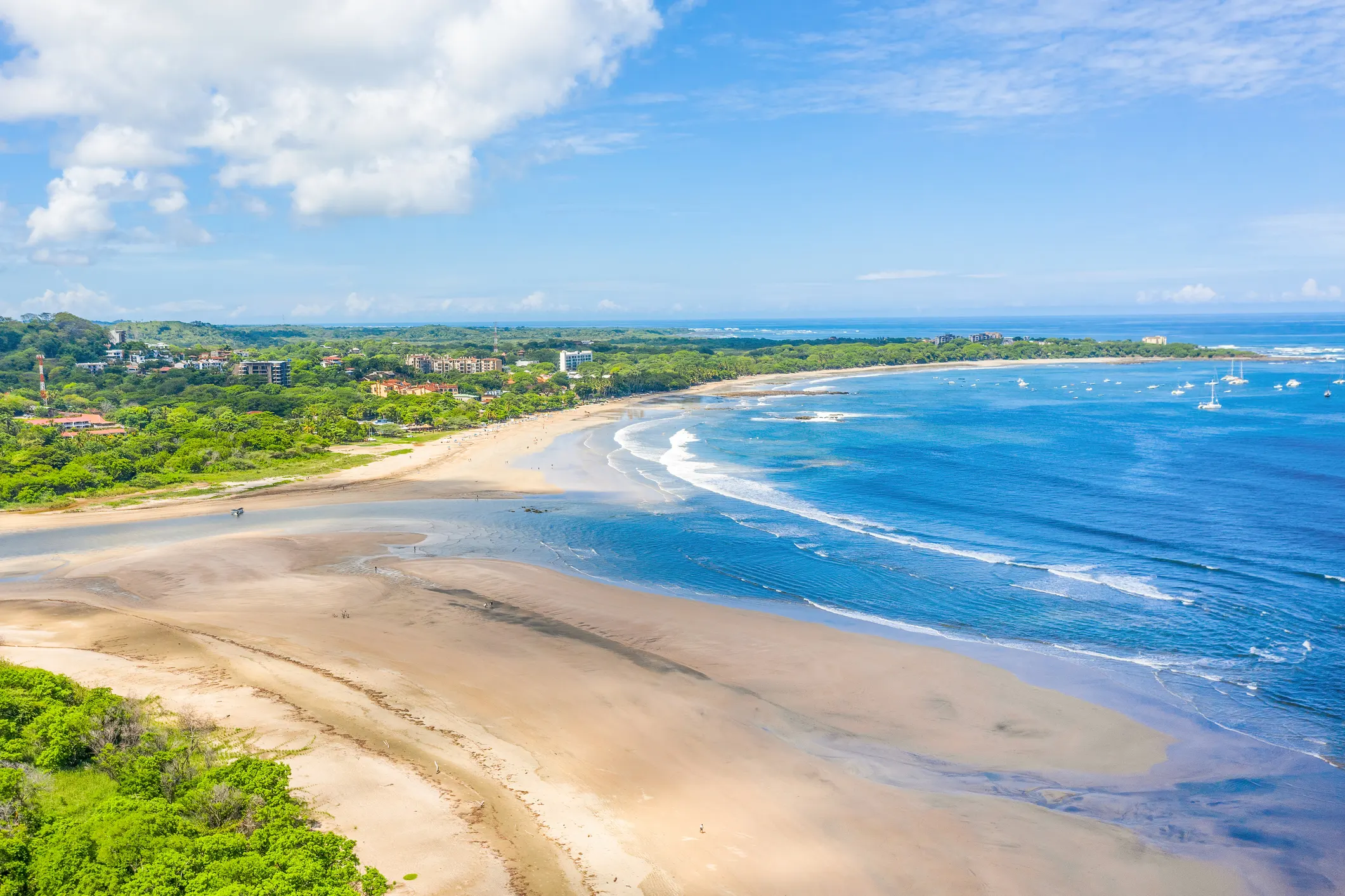
All this new investment helped spread the word about Guanacaste. This, along with the increased flight availability, has attracted a new kind of affluent visitor and expat. Think doctors, lawyers, executives, self-made entrepreneurs, and work-from-anywhere professionals.
Since they started coming, real estate here has been heating up right alongside the hospitality development. With new construction in popular towns like Playas del Coco, Playa Flamingo, and Tamarindo, high-end condos go for $500,000 and up, penthouses for over a million…
All that’s not to give a false impression of this region. Far from overdeveloped, Guanacaste retains a rustic, rural charm. It’s a family-oriented destination where life is lived at a laidback pace. But the patterns I see playing out in Guanacaste remind me of the trends I tracked in Cabo.
Cabo was once a destination for celebrities and the elite. Then new affluent visitors and long-term residents started coming in big numbers. They weren’t in the market for mansions, but they wanted luxurious, resort-style amenities and a perfect location—and they were (and are) willing to pay to get it.
I tracked this trend in Cabo for members of my Real Estate Trend Alert group and bought them some killer deals to get ahead of it. Then there were our deals on luxury homes in Cabo.
$602,885 More — A RETA member bought a luxury villa in Copala, in the Quivira master-planned community, for $385,115 in 2017. I recently saw the same Copala villa listed for $988,000—that’s an uplift of $602,885.
$421,778 Uplift — Also in Quivira, a RETA member bought a villa in Mavila for $428,222 in June 2018. A villa there was just on the market for $850,000.
Now, similar trends are playing out in Guanacaste. What’s happening in the rental market is telling. Long-term rental prices along the coast of Guanacaste were already among the highest in Costa Rica. Now, they’ve pushed even higher.
A few years back, one of my scouts, who previously lived in Tamarindo, visited the condo he used to rent there—a three-bed about 15-minutes’ walk from the beach. He paid $1,200 a month five years ago. It was going for $3,000 a month when he visited. Prices have remained in this range since.
The issue is that almost no one is catering to these new affluent visitors and long-term renters. There are high-end resorts for the ultra-rich, and there are basic accommodations to serve the surfer crowd that first discovered this region. But luxury real estate is scarce, even though demand for it has exploded.
A big reason for this scarcity is that development here is strictly controlled. Costa Rica is focused on protecting the natural environment that’s so key to its tourism industry. There are very strict permitting and licensing requirements on new construction. This creates a "moat," or barrier, to new development. And it means huge opportunity along this coast.
I’ve just brought a deal here to my Real Estate Trend Alert group—and I bought alongside RETA members. We had the chance to lock in what I believe will be gains of over $200,000 just three years after delivery on luxury homes, in an ideal location close to two beaches and the marina at Playa Flamingo. And thanks to our group-buying power, our price was just a fraction of what others pay along this coast.
This is a killer deal, and I’ll be looking out for more like it. Demand is skyrocketing here, but supply is limited and will remain so due to Costa Rica’s strict rules on development. This means the real estate market here is locked in a long-term uptrend.
The Land of Eternal Youth: Life in a Blue Zone
Blue Zones are regions of the world where people live exceptionally long lives. There are only five Blue Zones globally. Three are islands—a tiny Greek island called Ikaria, the Italian island of Sardinia, and Okinawa in Japan. Closer to home, there’s a community of Seventh Day Adventists in Loma Linda, California.
The fifth Blue Zone is the Nicoya Peninsula on Costa Rica’s northwestern Pacific coast. People there are twice as likely to live to 90 as Americans. Like the four other Blue Zones, the Nicoya Peninsula is warm year-round, gets lots of sunshine, and offers easy access to the ocean. The local diet is excellent too, featuring plenty of locally caught fish, plus beans, rice, and fresh fruit.
Most crucially, this is a destination that encourages communal outdoor activities.
Nicoya is a natural paradise, with stunning beaches and lush jungles. Surrounded by this remarkable natural beauty, people regularly take the time to go surfing, explore nature and hiking trails, or swim in the ocean. This daily activity not only improves physical health, it also helps reduce stress.
The Nicoya Peninsula also has a unique advantage you won’t find in other Blue Zones: its calcium-rich water, which improves bone health in later life.
More sunshine, more good food, and more time outdoors and by the ocean—these are keys to an exceptionally long and healthy life. And it’s a lifestyle that you’ll find in northwestern Costa Rica.
Free Report: Best Places in the World to Buy Real Estate

Learn more about the Best Places in the World to Buy Real Estate in our daily postcard e-letter. Simply enter your email address below and we'll send you a FREE report - The World's Best Places to Buy Real Estate.
By submitting your email address, you will receive a free subscription to Your Overseas Dream Home and special offers from International Living and our affiliates. You can unsubscribe at any time, and we encourage you to read more about our Privacy Policy .
- Latin America News
- Art and Culture
- Science and Tech
- Classifieds

COSTA RICA'S LEADING ENGLISH LANGUAGE NEWSPAPER
Exchange Rate Crisis Hits Costa Rica’s Banana Sector
Power outages scheduled by ice across costa rica, president chaves’ legislative address: a tale of two costa ricas, costa rica may gardening: tips and tricks for a bountiful harvest, costa rica drops in world press freedom index 2024.
The Costa Rican Electricity Institute announced that there will be power outages due to a drop in the energy reserve levels of the National Electric System (SEN). According to ICE, this is due to a critical decrease in hydroelectric flows and the non-compliance of the suppliers of the leased thermal plants to cope with the dry season.
“We have carried out all necessary efforts to avoid this condition; however, rain and wind levels were reduced to figures that we have not recorded before. As is our responsibility, we are developing a strategic, operational, and communication plan with all the System’s stakeholders,” said Roberto Quiros, ICE’s manager.
Earlier this year, ICE pointed out that the absence of rainfall and wind will have a direct impact on electricity production. Also, domestic energy demand has increased, which has put pressure on power generation.
“In its role as the country’s main electricity supplier, ICE Group assures the industrial sector and high-voltage customers, as well as hospitals and major health centers that they will have continuous service and will not be affected by this measure,” the institution assured.
However, several ICE executives have mentioned that this is also due to the institution’s poor planning in recent years. The problem was also exacerbated due to “the non-compliance of the suppliers of the thermal plants that ICE Group rented for the dry season.”
Only one of the two private thermal plants that the ICE contracted to guarantee electricity supply to the country managed to operate on a timely manner in Moin, Limon.
The other one, set up in Garabito, Puntarenas, experienced several delays. They claimed that ICE did not provide the necessary technical observations required for purchasing power cables. They also mentioned they had been told there was a ground grid, which in reality did not exist that they had to design a new one, and the location of the blocks was also changed. Lastly, there was a discrepancy between the area assigned in the plans and the area available on site for equipment installation.
In a press release, ICE reaffirmed its commitment to “continue working to minimize the impact” of power cuts.
Weekly Recap
Costa rica weekly recap news recap may 5, 2024.

Latest Articles
Costa rica airfare sale with over 50% savings on united flights, costa rica shuts down state zoos, ends animal captivity, electricity cuts to affect costa rica next week, confirms ice, costa rican urban legends: truths and myths unfold, panama papers’ ramon fonseca dies before sentencing.

Making destructive tourism sustainable
From Thailand to Mallorca, local ecosystems have suffered under the weight of mass tourism. Can visitor number limits and sustainable practices help restore the balance?
Tourism accounts for around 8% of global greehouse gas emissions, with around half coming from flying to and from destinations.
As airlines and hotels out-compete each other on price, post-pandemic tourist numbers are breaking records , with one million people arriving in Greece per week in the summer of 2022 — despite high inflation and an energy crises driven by the war on Ukraine, and intense wildfires linked to climate change .
The ecological and climate impact of this overtourism is forcing the industry to act, and to follow in the footsteps of some sustainable tourism pioneers.
'The Beach': Thailand's Maya Bay closes for restoration
Maya Bay , an an idyllic beach on an uninhabited island in Thailand's Phi Phi archipelago, become globally famous when it was the location for "The Beach," the 2000 film starring Leonardo DiCaprio.
Flanked by vast limestone cliffs, the secluded cove with its white sand and turquoise water became jammed with flotillas of boats and cruisers as thousands of tourists flocked to the beach daily for nearly two decades.
Tourist traffic led to pollution from discarded trash and damaged coastal vegetation, but the main problem was the boats dropping their anchors onto the coral below.
When "The Beach" was sealed off to the public in 2018, there was only 8% of the coral coverage in the bay, compared to up to 70% some 30 years before.
A restoration team set about replanting the destroyed coral to rehabilitate the reef in five to 10 years. Boats have to dock at a new pier rather than come ashore on the beach, swimming is forbidden, and new boardwalks keep visitors from trampling the delicate coastal ecostyem.
When Maya Bay finally reopened in early 2022, visitor numbers were cut from the previous height of around 7000 to around 400 per day, noted Thon Thamrongnawasawat, head of the restoration team, in an interview with China's State news agency, Xinhua.
"It is one of the most successful marine actions in many years not only for Thailand but for the whole world," he said.
Bhutan adapts to climate change via tourism fee
The tiny Himalayan kingdom of Bhutan, known for its philosophy of promoting " gross national happiness ," introduced a Sustainable Development Fee (SDF) of $65 (€61) around three decades ago to limit mass tourism in the mountainous nation.
Under the mantra of "high-value, low-volume" tourism, the tax revenue has been invested into conservation and sustainability through planting trees, clean and maintain trails and to electrify transport. The fee has helped Bhutan become South Asia's only carbon-negative country as its protected forests continue to store more carbon than the country emits.
The money also addresses high vulnerability to climate change , with impacts ranging from severe drought to melting glaciers.
In 2022, the Bhutan government raised the daily fee to $200 dollars per person when it reopened following the pandemic, saying the cash would be used to offset tourism emissions.
But the fee hike hit tourist numbers and resulted in losses across the sector. In August, Bhutan halved the amount to US$100 to stimulate tourism as it strikes a balance between climate protection and the local economy.
Costa Rica fights deforestation with ecotourism
In 1997, Costa Rica implemented a Certification for Sustainable Tourism that became a pioneering blueprint for a climate- and environment-friendly travel industry.
The reform was in line with an attempt to reverse decades of deforestation, with around half the forest that once covered 75% of Costa Rica lost between the 1940s and 1980s.
Small ecotourism entrepreneurs soon created low impact resorts and ecolodges aimed at more affluent travellers wanting to explore the country's rich biodiversity and natural beauty.
Sustainable tourism is integral to the fact that over half the nation is again covered in forest. Meanwhile, more than 98% of the Latin American nation's energy comes from renewable sources.
As part of its strict ecotourism certification, Costa Rica has continued to prove the fact that some visitors will pay more for a genuine sustainable travel experience.
Mallorca: Can sustainability tax offset overtourism?
During peak tourist season, an airplane lands or takes off in the Balaeric Sea island of Mallorca every 90 seconds.
"There are few places in the world that contribute as much to global warming as Mallorca," Jaume Adrover, a spokesperson for the Mallorca-based environmental group Terraferida, told DW in 2022 of the tourist mecca. "And this is due to only one activity: tourism."
During its 2019 peak, 12 million visitors descended on an island whose population is a little over 900,000 people. The sheer weight of numbers has forced the government to limit the ecological and climate impact of the industry.
A new 2022 tourism law addresses issues of energy efficiency and CO2 reduction in the hotels sector. Hotels need to eliminate fuel oil or diesel boilers to reduce CO2 emissions, and also install water-saving devices while banning single-use plastics. A moratorium on any new tourist accommodation until 2026 aims to reduce the explosion in tourism numbers.
This follows the introduction in 2016 of a daily eco tourism tax, currently as high as €4 euros per day, that is being reinvested in sustainability, including the restoration of Posidonia seagrass meadows.
Dubbed the "lungs of the Mediterranean," the seagrass produces oxygen, absorbs carbon, provide habitat and shelter for a variety of species, yet has receded around Mallorca due to pollution, and like in Maya Bay, boat anchors.
But without significantly reducing the number of tourists, and therefore flights, local ecologists like Jaume Adrover still fear that not enough is being done to transform the tourist hotspot into a model of sustainability.
Edited by: Tamsin Walker
Author: Stuart Braun


IMAGES
VIDEO
COMMENTS
Welcome to Costa Rica! This beautiful country is known for its stunning beaches, lush rainforests, and incredible wildlife. Whether you're looking for adventure or relaxation, Costa Rica has something for everyone. Some of the top attractions include Arenal Volcano, Manuel Antonio National Park, La Paz Waterfalls, Papagayo Peninsula ...
4. Commune with the creatures. For wildlife watchers, there's no better place to meet Costa Rica's fauna than the trails around Sirena station in Parque Nacional Corcovado, the area National Geographic called "the most biologically intense place on the planet.". Here, visitors have a good chance of seeing animals (some endangered) that are rare in other parts of the country, including ...
Península de Nicoya. Central Pacific Coast. Southern Costa Rica & Península de Osa. Caribbean Coast. Arenal & Northern Lowlands. Northwestern Costa Rica. Central Valley & Highlands. San José. The best things to do in Costa Rica; beaches, cities, national parks, places to stay, food and drink.
3. Monteverde. Best place for birds, butterflies and cloud forest canopy tours. Away from Costa Rica's sun-soaked beaches and steamy rainforests, Monteverde's mist-wreathed cloud forest reserves sit high on the country's mountainous spine. It's one of the world's biodiversity hot spots, with a staggering array of flora and fauna.
The official language in Costa Rica is Spanish, and even though English is widely used in tourist destinations, you might want to consider packing this Spanish Phrase Book just in case.. Costa Rica has a stable democracy and no army (since 1949), and avoided many conflicts that other countries in this region went through.
Costa Rica. Costa Rica is where to go when you want to disconnect and go all in on nature—and with its sun-drenched beaches and lush rainforests, it's pretty easy to do it. Yes, it's known for its laid-back pura vida lifestyle, but adventure's everywhere, too: Hike through lava fields at Arenal Volcano National Park, raft down the Rio ...
Arenal Volcano National Park. Adrian Rudd/Travel + Leisure. One of Costa Rica's most famous attractions, the 30,000-acre Arenal Volcano National Park draws upwards of 100,000 visitors each year ...
The best cheap things to do in Costa Rica are: Enjoy the sunset on the Nicoya Peninsula. Hike in Arenal Volcano National Park (entry fee is $15 per person) Explore the vibrant capital city, San ...
Best Months to Visit. The best time to visit Costa Rica is from mid-December to April (the dry season). This peak tourist season boasts plenty of sunshine making it an ideal time for exploring ...
2. Playa Manuel Antonio. One of Costa Rica's most popular beaches, Playa Manuel Antonio frequently hosts parties and festivals, and it is an ideal destination for avid surfers. 3. La Fortuna Waterfall. The Fortuna River Waterfall is a natural area managed sustainably by Integral Development Association of La Fortuna (ADIFORT), a non-profit ...
Vacationing in Costa Rica has never been easier and our travel guide offers tips and advice to help you save time, money & get the most out of your next Costa Rica vacation. Find out the best time to travel to Costa Rica, hotels, tours and more. The Costa Rica Travel Guide, written by local experts offers you REAL ADVICE about where to stay and ...
Numerous hiking trails are in the area; many lead to waterfalls and old and recent lava flows. 3. Monteverde and the Cloud Forests. Monteverde and the Cloud Forests. The Cloud Forests near Monteverde and Santa Elena are some of the best places to visit in Costa Rica for ecotourism.
Costa Rica Travel Costs. Hostel Costs - A bed in a hostel dorm with 4-6 beds costs between $15-25 USD per night, while dorms with 8 beds and up can be found for as cheap as $11-14 USD. Private rooms in hostels are usually $35-60 USD. Free Wi-Fi is standard and some hostels also include free breakfast.
Popular spots include Tamarindo, Manuel Antonio, Santa Teresa, Puerto Viejo - just to name a few of these Costa Rica attractions! Aside from beaches, Costa Rica is home to one of the most developed National Parks Systems in the world. There is an astonishing amount of the territory protected as either a national park, cloud forest, tropical ...
14. Make sure to carry enough cash. Some smaller and more remote places in Costa Rica, like Tortuguero, for example, don't have ATMs readily available. Considering that some hotels and hostels charge a 2-5% fee to pay for accommodations with a card, having cash on hand is a good idea.
Learn about Costa Rica's history, culture, biodiversity, and attractions before you go. Find out how to plan your trip, where to stay, and what to do in this democratic and peaceful country with 5 percent of the world's biodiversity.
Poás Volcano Crater is one of Costa Rica's main tourist attractions. Cocos Island is a prime ecotourism destination. A World Heritage Site, ranked among the top 77 nominees for the world's New 7 Wonders of Nature.. Tourism in Costa Rica has been one of the fastest growing economic sectors of the country and by 1995 became the largest foreign exchange earner.
Costa Rica is an eco-tourism hub due to its rich biodiversity. The nation thrills with beaches, volcanoes, and unique culture. Top spots include Arenal Volcano, Tamarindo, and the Nicoya Peninsula.
The gateway to Arenal Volcano National Park, the town of La Fortuna is a playground for eco-adventures — perhaps most notably hikes to one of the most famous waterfalls in Costa Rica. Add to that volcano walks, rainforest canopy hanging bridge tours, and bird watching. Natural hot springs bolster its wellness cred. Where to Stay: Nayara ...
Costa Rica was followed closely by Hawaii in second, with an average monthly search volume of 32,278, and was the most searched luxury vacation location in 20 states, with the highest number of ...
Basically, everything in Costa Rica screams eco-tourism, and it is even more refreshing to know that more than 25% of the country is protected from future exploitation.
Sloths, toucans, monkeys, and more. What it's like to travel on Aurora Expeditions' ship exploring the Central American coast. ... Costa Rica is home to about 6% of the world's species ...
Costa Rica is a safer choice for families, with a welcoming atmosphere ensuring peace of mind during your travels. While certain areas of Mexico may have safety concerns, popular tourist ...
Since the 1980s, the authorities have played on this, cranking out tourism slogans like "Costa Rica, it's only natural." These pioneering eco-tourism campaigns have been wildly successful. Today, Costa Rica is the most visited country in Central America. It had 2.47 million visitors in 2023—huge numbers for a country with a population of ...
Imagine being able to witness the breathtaking beauty of the Turrialba Volcano from above in a cable car. This may soon become a reality, thanks to a pioneering proposal set forth by Congress representatives Rosaura Méndez (PLN), Alejandro Pacheco (PUSC), and Pilar Cisneros, representing the ruling party.
The Costa Rican Electricity Institute announced that there will be power outages due to a drop in the energy reserve levels of the National Electric System (SEN). According to ICE, this is due to a critical decrease in hydroelectric flows and the non-compliance of the suppliers of the leased thermal plants to cope with the dry season.
Costa Rica fights deforestation with ecotourism. In 1997, Costa Rica implemented a Certification for Sustainable Tourism that became a pioneering blueprint for a climate- and environment-friendly ...